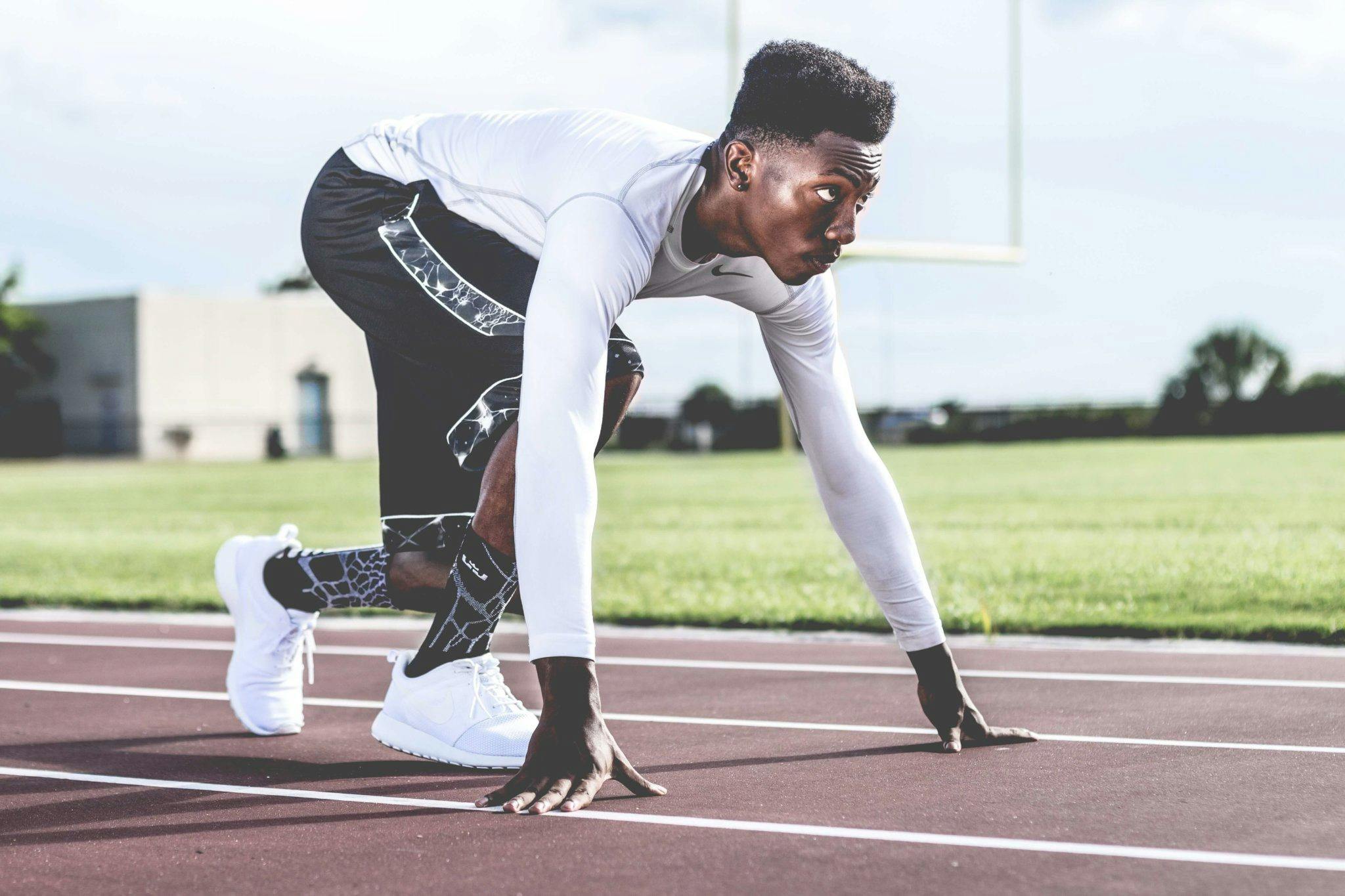Introduction
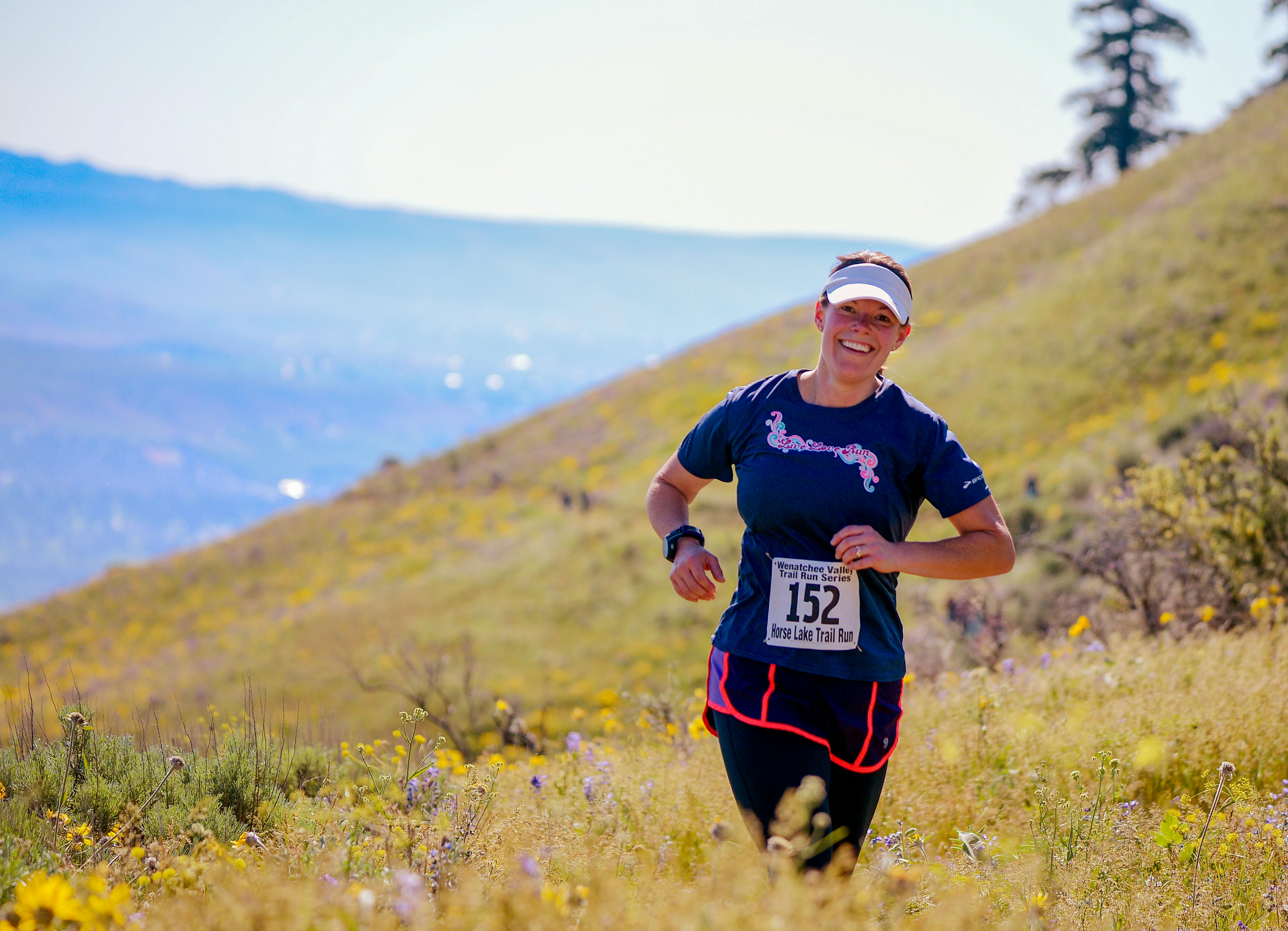
Welcome to your comprehensive guide on the essential gear for beginner runners! Stepping into the world of running is exciting, and it's natural to wonder about the equipment you'll need. The good news is, running is wonderfully accessible. You don’t need a mountain of specialized stuff to get started. However, having the right gear can make all the difference in your comfort, safety, and overall enjoyment of running. Think of it as setting yourself up for success right from the first step.
When you're new to running, it's easy to feel overwhelmed by the sheer volume of gear marketed towards runners. From high-tech gadgets to specialized apparel, the options seem endless. But before you empty your wallet on everything promising to make you faster or more comfortable, let's take a breath and focus on the basics. This guide is designed to cut through the noise and help you understand what gear is truly essential when you're just starting out, what's nice to have as you progress, and what you can confidently skip – at least for now.
Why does gear even matter? Well, imagine trying to run in stiff, uncomfortable shoes or heavy, sweat-soaked cotton clothing. Not a pleasant thought, is it? The right equipment is designed to work with your body as you move, providing comfort, support, and protection from the elements. Good gear can help prevent injuries, wick away sweat to keep you dry and comfortable, and even improve your performance. It’s about making your running experience as enjoyable and effective as possible.
In this guide, we'll break down the essential gear for beginner runners, focusing on items that will give you the most benefit right from the start. We'll talk about running shoes (the most crucial piece of gear!), moisture-wicking apparel, and those often-underestimated heroes – running socks. We'll also touch on some 'nice-to-have' items that can enhance your running experience as you become more dedicated, and importantly, we’ll identify gear you can confidently skip when you're just beginning. Our goal is to equip you with the knowledge to make smart choices, ensuring you have everything you *need* for a successful and enjoyable running journey, without unnecessary expense or complication. Let’s get started!
Essential Running Gear for Beginners
When you're lacing up for your first runs, focusing on the essentials is key. These are the foundational pieces of gear that will significantly impact your comfort, safety, and overall running experience. Investing wisely in these items from the start will set you on the right path and help prevent common beginner pitfalls. Let's dive into the must-have running gear for beginners:
Running Shoes: Your Most Important Investment
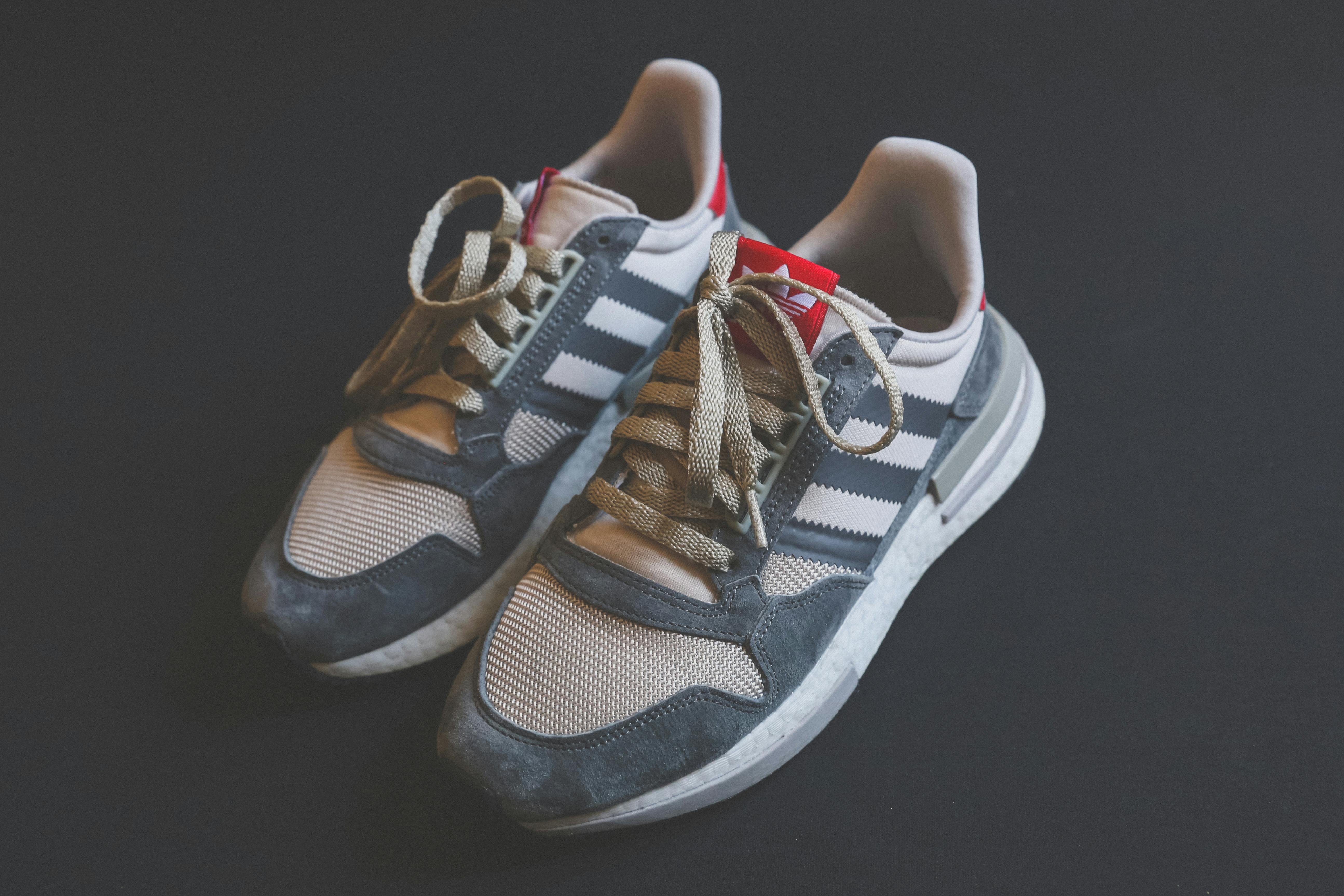
If there's one piece of gear to prioritize as a beginner runner, it's definitely your running shoes. Think of them as the foundation of your running setup – everything else builds upon this crucial base. Wearing the wrong shoes can lead to discomfort, blisters, pain, and even injuries down the line. Investing in a good pair of running shoes isn’t just about comfort; it’s about injury prevention and making running a sustainable, enjoyable activity.
Importance of a Good Pair
Running shoes are specifically designed to cushion your feet from the impact of hitting the ground repeatedly, provide support, and facilitate the natural motion of your foot as you run. Unlike everyday sneakers or cross-training shoes, running shoes have features tailored to the repetitive, forward motion of running. They typically offer more cushioning in the heel and forefoot, are made from breathable materials to keep your feet cool and dry, and are designed to be lightweight to reduce fatigue.
A good pair of running shoes will:
- Cushion Impact: Reduce the stress on your joints (ankles, knees, hips) by absorbing the shock of each footstrike.
- Provide Support: Help stabilize your foot and ankle, reducing the risk of strains and sprains.
- Enhance Comfort: Made with breathable materials and designed for the biomechanics of running, they minimize discomfort and blisters.
- Improve Performance (Indirectly): By keeping you comfortable and injury-free, good shoes allow you to run more consistently and progress in your training.
Running in unsuitable shoes, like old sneakers or fashion trainers, can quickly lead to problems. Lack of cushioning can cause impact-related injuries like stress fractures or shin splints. Poor support can contribute to ankle instability and knee pain. And non-breathable materials can lead to hot, sweaty feet, increasing the risk of blisters and fungal infections. In short, the right running shoes are not a luxury – they are essential for healthy, happy running.
How to Choose the Right Shoes
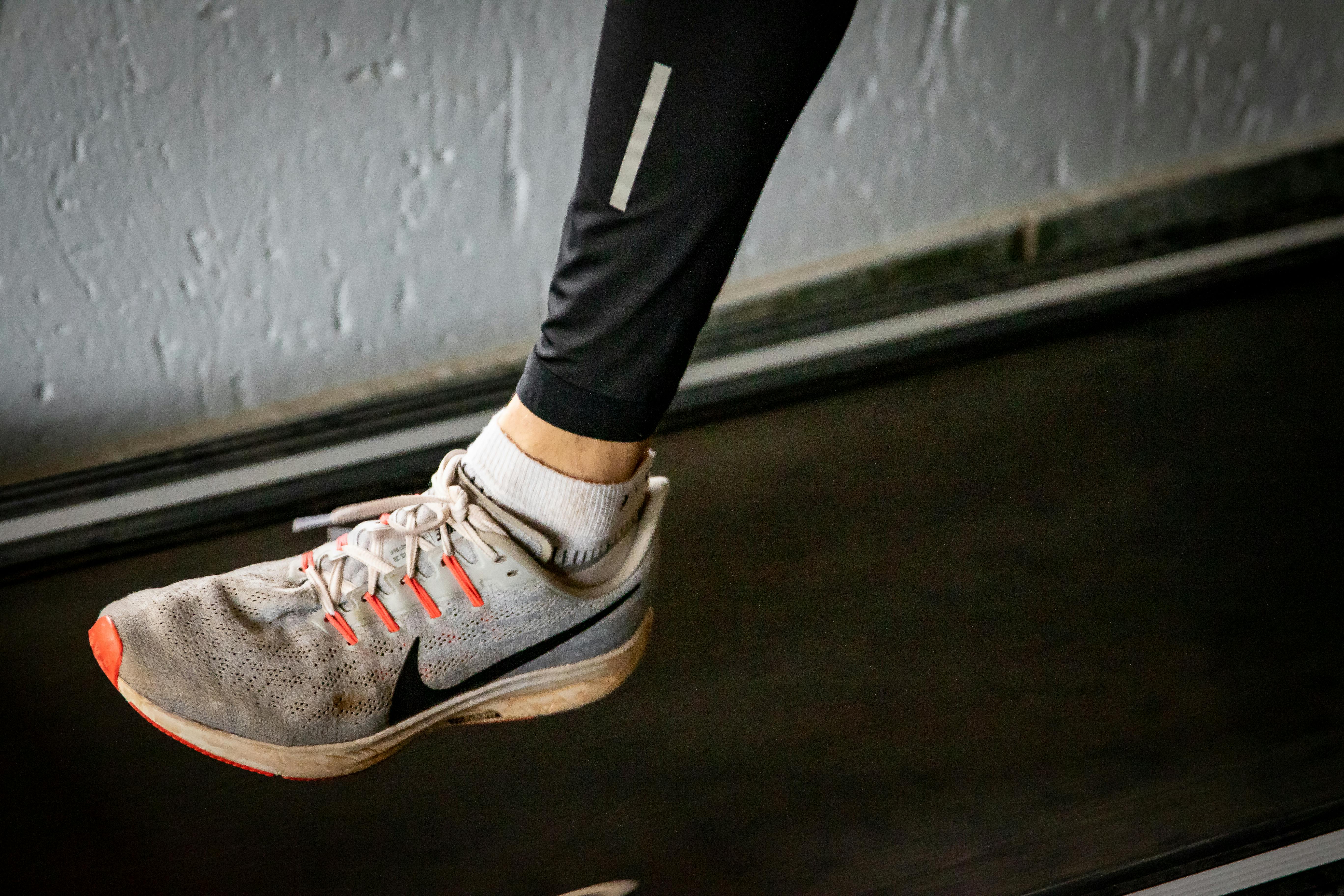
Choosing the right running shoes might seem daunting with so many brands, models, and technical terms out there. But breaking it down into a few key considerations can simplify the process. Here’s what to think about when selecting your first pair of running shoes:
- Foot Type and Pronation: Understanding your foot type is crucial. Most people have either neutral, pronated (feet roll inward), or supinated (feet roll outward) foot motion. Specialty running stores can analyze your gait (how you run) and foot arch to recommend shoes that match your pronation. While you can do a “wet foot test” at home to get a general idea of your arch type (high, medium, low), professional gait analysis is more accurate.
- Intended Use and Terrain: Are you planning to run mostly on roads, trails, or a treadmill? Road running shoes are designed for pavement, offering cushioning and flexibility. Trail running shoes have more aggressive outsoles for traction on uneven surfaces and often offer more protection from rocks and roots. For beginners, road running shoes are typically the best starting point.
- Cushioning Level: Running shoes come in varying levels of cushioning – from minimal to maximal. Beginners usually benefit from shoes with moderate cushioning to absorb impact as they build up their running fitness. Too much cushioning isn’t always better, as it can sometimes feel unstable. A balanced level is usually ideal for starting out.
- Fit is Paramount: This is non-negotiable. Your running shoes should fit comfortably right away, with about a thumb's width of space between your longest toe and the end of the shoe. Your heel should feel secure and not slip, and the shoe should feel snug but not tight around the midfoot. Always try shoes on in the afternoon or evening, as feet tend to swell throughout the day. Wear the type of socks you plan to run in when you try on shoes.
- Consider Specialty Running Stores: Visiting a specialty running store is highly recommended, especially for your first pair. Staff at these stores are trained to assess your feet, watch you walk or run, and recommend shoes that are appropriate for your needs. They can also provide expert fitting advice and answer any questions you have.
Don't get too caught up in brand names or the latest trendy models. Focus on fit and function. The best running shoe for you is the one that feels most comfortable and supportive on *your* feet.
Where to Buy Your Running Shoes
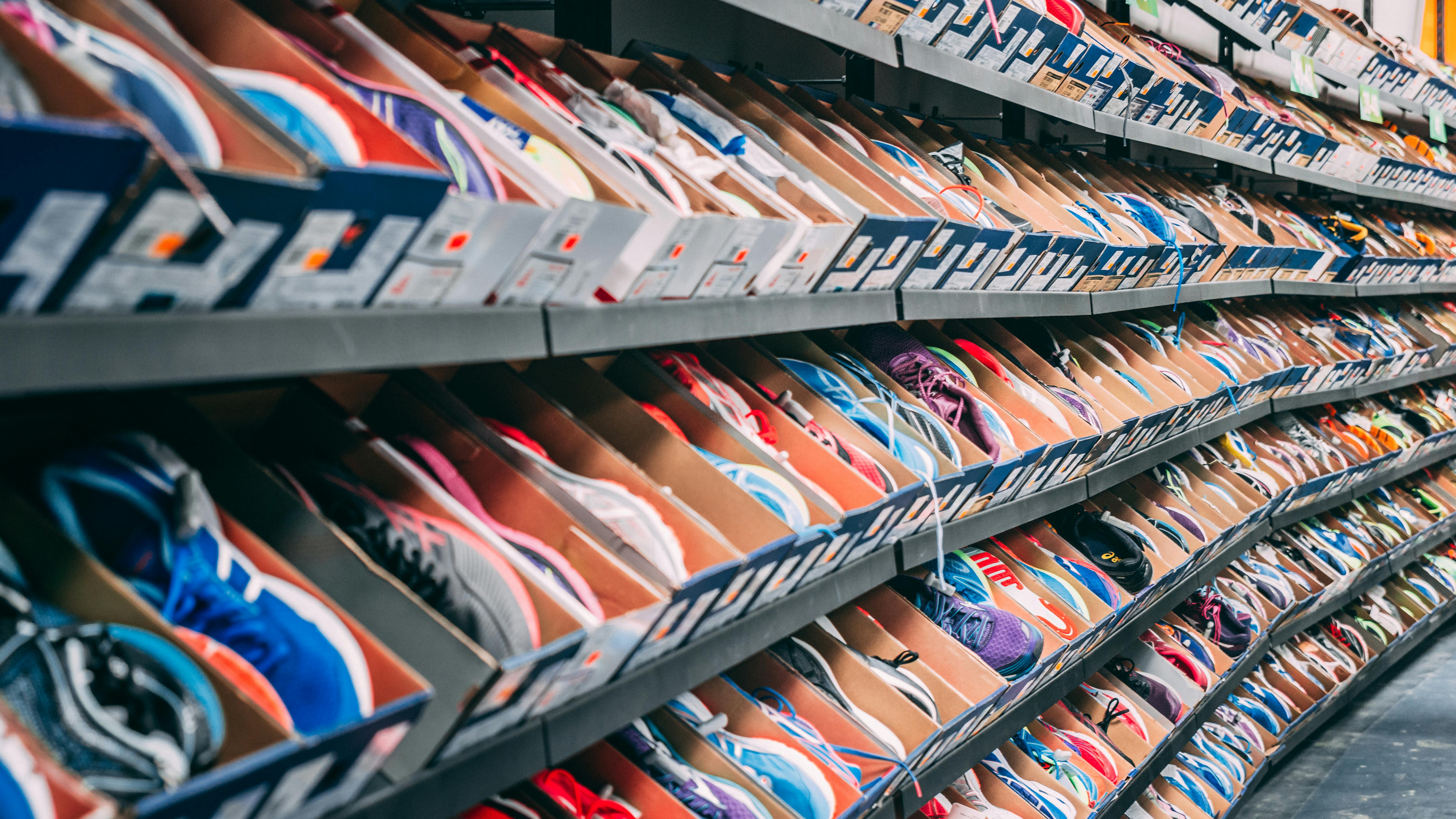
Where you buy your running shoes can be as important as which shoes you choose. Here are some recommended places to purchase your running shoes:
- Specialty Running Stores: As mentioned, these are often the best option, particularly for beginners. They offer expert advice, gait analysis, and a wide selection of running shoe brands and models. The staff can guide you through the selection process and ensure you get a proper fit. While prices might sometimes be slightly higher than online, the personalized service and expertise are invaluable, especially for your first pair.
- Reputable Online Retailers: If you know your shoe size and preferred brands, or if you're replacing a pair you've worn before, online retailers can offer convenience and sometimes competitive pricing. However, be sure to choose retailers with generous return policies in case the shoes don't fit properly. Read reviews carefully and be wary of deals that seem too good to be true, as they might be counterfeit or older models.
- Department Stores and General Sporting Goods Stores: These can be options, but often lack the specialized knowledge and focused selection of running shoes you'll find at dedicated running stores. If you go this route, do your research beforehand and know what you're looking for, or be prepared to do your fitting and selection elsewhere and then potentially purchase from these stores if they carry the model you need.
For beginners, the in-person experience at a specialty running store is highly recommended. It’s an investment in your running journey that can pay off in comfort, injury prevention, and confidence in your gear.
Moisture-Wicking Apparel: Stay Dry and Comfortable
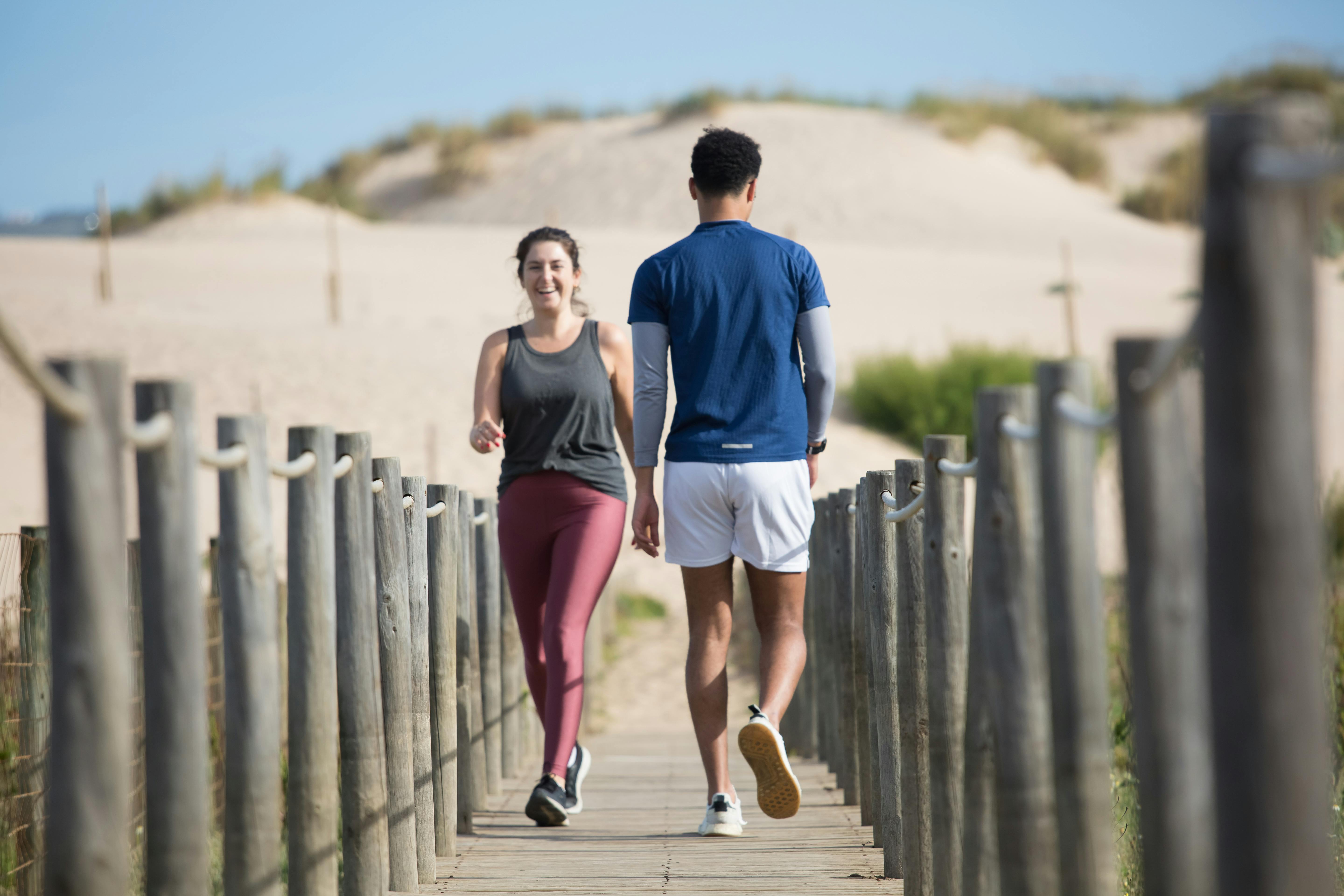
Once you've sorted out your shoes, the next essential gear category is apparel. What you wear while running significantly impacts your comfort, especially in varying weather conditions. The key here is to choose moisture-wicking fabrics. Let's explore why fabric matters and what basic apparel you'll need.
Why Fabric Matters: Ditch the Cotton!
The golden rule of running apparel: avoid cotton like the plague! Cotton is a terrible choice for running, especially for anything beyond a very short, easy jog in cool, dry weather. Why? Because cotton absorbs sweat and holds onto it like a sponge. When you sweat in cotton, it becomes heavy, wet, and stays that way. This leads to several problems:
- Chafing: Wet cotton fabric rubbing against your skin can cause painful chafing, especially in areas like the inner thighs, underarms, and nipples (for men).
- Overheating in Warm Weather: While you might think wet clothing would keep you cool, cotton actually hinders your body's natural cooling process. The wet fabric traps heat and moisture against your skin, making you feel hotter and more uncomfortable.
- Chilling in Cold Weather: Conversely, in cooler weather, wet cotton can make you dangerously cold. As the sweat evaporates from the wet fabric, it draws heat away from your body, leading to chills and even hypothermia in cold and windy conditions.
- Heavy and Uncomfortable: Wet cotton clothing becomes heavy and clingy, restricting your movement and feeling generally unpleasant.
Instead of cotton, opt for moisture-wicking fabrics. These are typically synthetic materials like polyester, nylon, and blends, or natural options like merino wool. These fabrics are designed to pull sweat away from your skin and allow it to evaporate quickly, keeping you dry and comfortable. They are breathable, lightweight, and designed for performance.
Basic Moisture-Wicking Apparel List
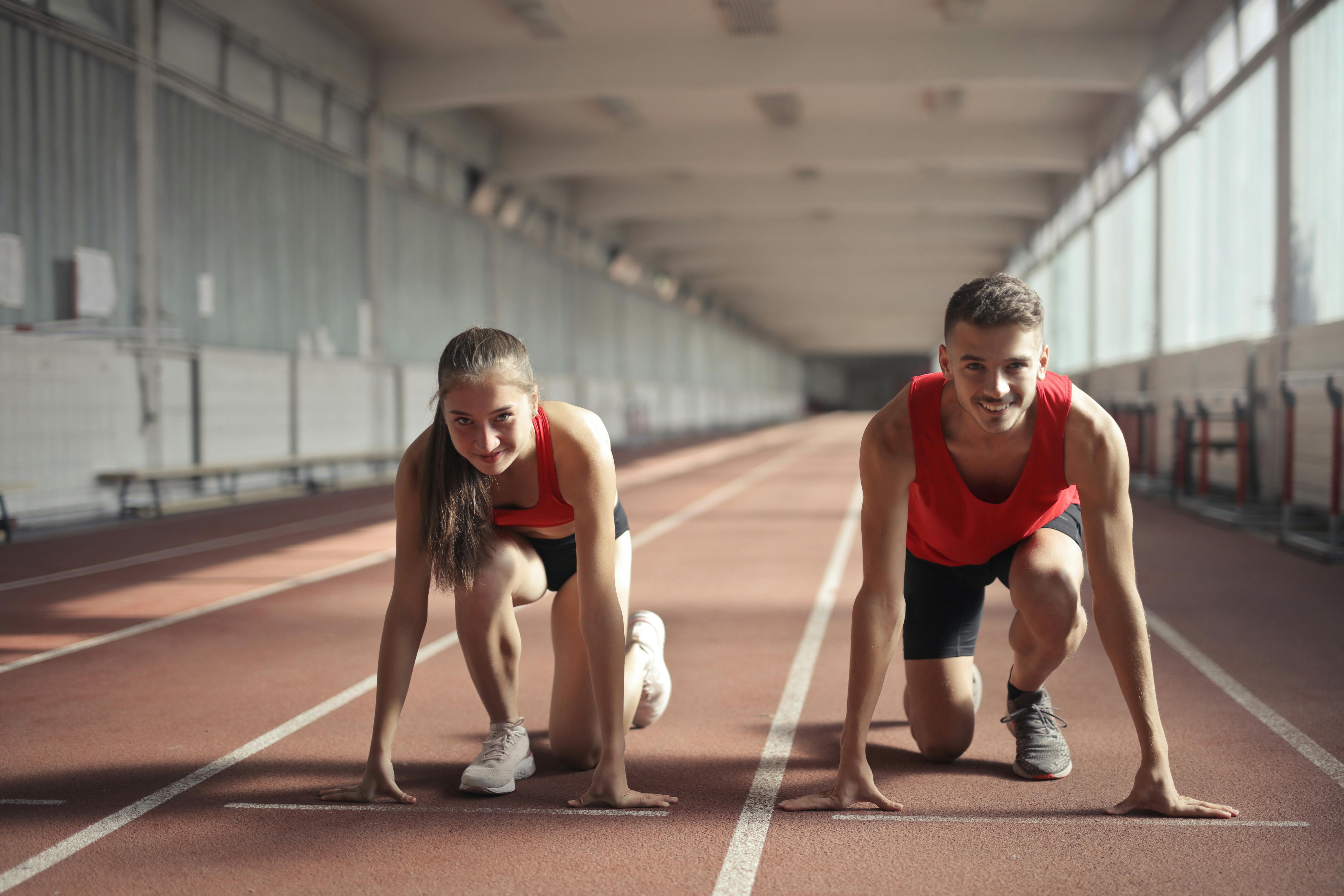
For beginner runners, you don't need a huge wardrobe of running apparel. Start with these basics, and you can expand as you run more and encounter different weather conditions:
- Tops:
- Short-Sleeve Shirts: Essential for warmer weather or indoor running. Look for lightweight, breathable, moisture-wicking fabrics. You can start with 2-3 of these.
- Long-Sleeve Shirts: For cooler weather or layering. Again, prioritize moisture-wicking materials. One or two long-sleeve shirts should suffice initially.
- Tank Tops/Singlets: For hot and humid conditions. These offer maximum ventilation but might not be suitable for sun protection or modesty in all situations.
- Bottoms:
- Shorts: Running shorts are designed for freedom of movement. Look for built-in briefs for support and moisture-wicking fabrics. Different lengths and styles are available; choose what feels comfortable for you.
- Tights/Capris: For cooler weather, tights or capri-length running pants offer warmth and support. They should be snug but not restrictive and made from moisture-wicking, breathable fabric.
- Running Pants: For colder conditions, lightweight running pants provide more coverage and warmth. Look for wind-resistant and water-resistant options for harsher weather.
- Outerwear (depending on climate):
- Lightweight Jacket: For windy or light rain conditions. Choose a windbreaker or a water-resistant jacket made from breathable, moisture-wicking fabric.
- Rain Jacket: For heavier rain. Look for waterproof and breathable jackets.
- Insulated Jacket: For very cold weather running. Layering is key; an insulated running jacket might be needed in truly frigid temperatures.
Start with a few basic moisture-wicking tops and bottoms that suit the typical weather in your area. As you run more and in different seasons, you can gradually add to your apparel collection. Remember, comfort is key. Choose apparel that fits well, allows for free movement, and keeps you dry and comfortable throughout your runs.
Running Socks: Don't Underestimate These Heroes

Socks might seem like a minor detail, but for runners, they are surprisingly important. The right running socks can make a huge difference in comfort and blister prevention. Just like with apparel, ditch the cotton socks and embrace performance running socks made from appropriate materials.
The Crucial Role of Running Socks
Running socks are more than just fabric to fill your shoes. They play several critical roles in keeping your feet happy and healthy on your runs:
- Blister Prevention: Friction and moisture are the primary culprits behind blisters. Running socks made from moisture-wicking materials help keep your feet dry, reducing friction. Many running socks also have seamless toe boxes or reinforced areas in high-friction zones to further minimize blister risk.
- Moisture Management: Just like running apparel, good running socks wick away sweat from your feet. Dry feet are less prone to blisters, fungal infections, and general discomfort.
- Cushioning and Support: Running socks offer a layer of cushioning that can enhance comfort and reduce impact. Some socks provide targeted cushioning in areas like the heel and ball of the foot. They also offer a snug fit that can provide subtle support and prevent the foot from sliding around inside the shoe.
- Temperature Regulation: In warm weather, breathable running socks help keep your feet cool. In cold weather, thicker merino wool socks can provide warmth without trapping moisture.
Wearing regular cotton socks for running is a recipe for blisters and discomfort. Cotton socks absorb sweat, become damp, and bunch up or slip inside your shoes, creating friction hotspots. Investing in a few pairs of quality running socks is a small investment that yields significant comfort and injury prevention benefits.
Material Recommendations for Running Socks
When choosing running socks, look for materials that offer moisture-wicking and breathability. Here are some excellent material options:
- Synthetic Blends: Most running socks are made from blends of synthetic fibers like polyester, nylon, and spandex. These blends offer excellent moisture-wicking, durability, and a snug, supportive fit. They are also generally affordable and come in various thicknesses and styles.
- Merino Wool: Merino wool is a natural fiber that is incredibly soft, breathable, and naturally odor-resistant. It’s excellent at wicking moisture and provides warmth in cooler conditions and coolness in warmer conditions, making it versatile for year-round running. Merino wool socks tend to be a bit more expensive than synthetic blends, but many runners find the comfort and performance worth the investment.
- CoolMax®: This is a specific type of polyester fiber known for its exceptional moisture-wicking properties. Socks made with CoolMax® are excellent for hot weather running, keeping feet cool and dry.
When shopping for running socks, consider these features:
- Moisture-Wicking Material: Prioritize synthetic blends or merino wool.
- Seamless Toe Box: Reduces friction and irritation at the toes.
- Snug Fit: Socks should fit snugly without being too tight and should not slip down into your shoes.
- Cushioning Level: Choose cushioning based on your preference and shoe type. Some runners prefer thicker cushioned socks for added comfort, while others prefer thinner, lighter socks for a closer feel to the shoe.
- Height: Sock height is mostly a matter of personal preference. Ankle socks, crew socks, and quarter socks are all common for running. Choose a height that is comfortable and prevents rubbing from your shoes.
Start with a few pairs of quality running socks. Experiment with different materials and styles to find what works best for your feet and running conditions. Your feet will thank you!
Sports Bra (For Women): Essential Support and Comfort
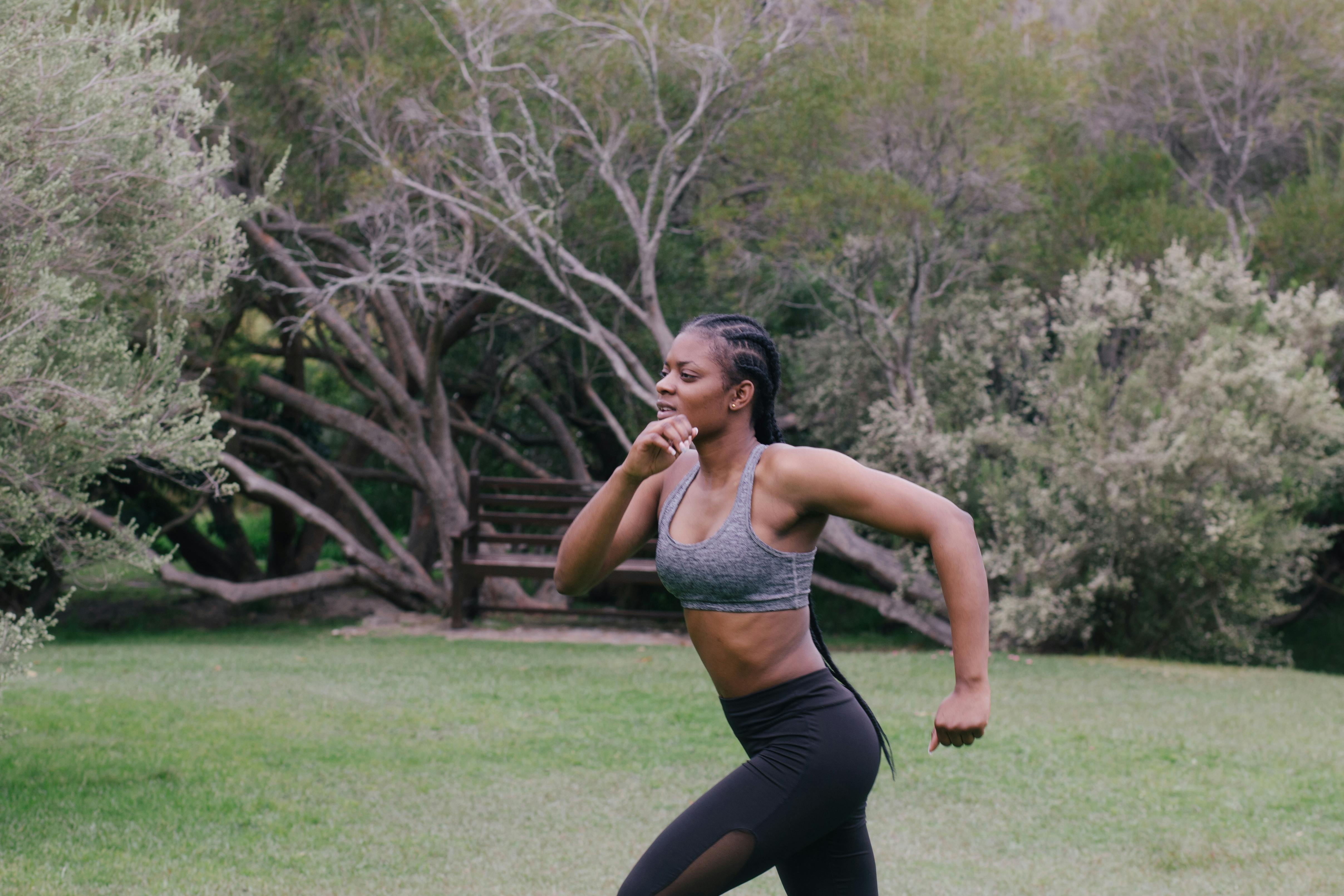
For women runners, a good sports bra is not just an accessory – it's an essential piece of gear for comfort and support. Proper support in this area is crucial for preventing discomfort, pain, and potential long-term issues. Let’s understand why a sports bra is so important and how to choose the right one.
Support and Comfort: Why a Sports Bra is a Must
Running involves a lot of up-and-down motion, and without proper support, this can cause significant discomfort and even pain for women. A well-fitted sports bra is designed to minimize breast movement during high-impact activities like running. Here’s why it’s so important:
- Minimize Movement: Sports bras are engineered to compress or encapsulate the breasts, significantly reducing bounce during running. This minimizes discomfort and distraction.
- Prevent Pain and Discomfort: Excessive breast movement can cause breast pain, especially during longer runs. A supportive sports bra helps prevent this discomfort, allowing you to focus on your run.
- Protect Breast Tissue: Over time, repeated high-impact movement without adequate support can contribute to stretching of the Cooper's ligaments, which provide natural breast support. While this is a complex issue and not solely caused by running, a good sports bra can help minimize stress on these ligaments.
- Improve Comfort and Confidence: Feeling secure and supported allows you to run more comfortably and confidently. You’re less likely to be distracted by discomfort or self-conscious about movement.
Wearing a regular bra for running is simply not adequate. Regular bras are designed for everyday support, not the high-impact demands of running. They often lack the compression, support, and moisture-wicking properties needed for running comfort.
Choosing the Right Sports Bra
Finding the right sports bra can sometimes take a bit of trial and error, but understanding the basics will make the process easier. Here are key factors to consider when choosing a sports bra for running:
- Impact Level: Sports bras are typically categorized by impact level: low, medium, and high. For running, which is a high-impact activity, you need a high-impact sports bra. These bras offer the maximum support and compression needed for running.
- Type of Support:
- Compression Bras: These bras compress the breasts against the chest to minimize movement. They are generally good for smaller to medium-sized breasts and offer a snug, secure feel.
- Encapsulation Bras: These bras have molded cups that individually support each breast, similar to a regular bra but with more robust construction and supportive materials. Encapsulation bras are often preferred by women with larger breasts as they can provide better shape and separation, in addition to support.
- Combination Bras: Many high-impact sports bras combine both compression and encapsulation for optimal support and shape.
- Fit is Key: A sports bra should fit snugly but not be too tight. You should be able to breathe comfortably. The band should sit firmly around your ribcage without riding up in the back. The straps should be comfortable and not dig into your shoulders. When trying on a sports bra, jump up and down or mimic running motions to check for bounce and comfort.
- Material: Look for moisture-wicking and breathable fabrics, just like with other running apparel. Synthetic blends are common and effective.
- Straps and Closure:
- Racerback Straps: Common for sports bras, racerback straps offer good support and keep straps from slipping.
- Adjustable Straps: Adjustable straps allow you to customize the fit.
- Hook-and-Eye Closure: Some sports bras have a hook-and-eye closure in the back, similar to regular bras, which can make them easier to put on and take off, especially for larger sizes.
Just like with running shoes, it’s a good idea to try on sports bras in person if possible, especially for your first few purchases. Specialty running stores or lingerie stores often have knowledgeable staff who can help with fitting. Don't hesitate to try different styles and brands to find what works best for your body and comfort. A well-chosen sports bra will make your runs much more comfortable and enjoyable.
Nice-to-Have Running Gear
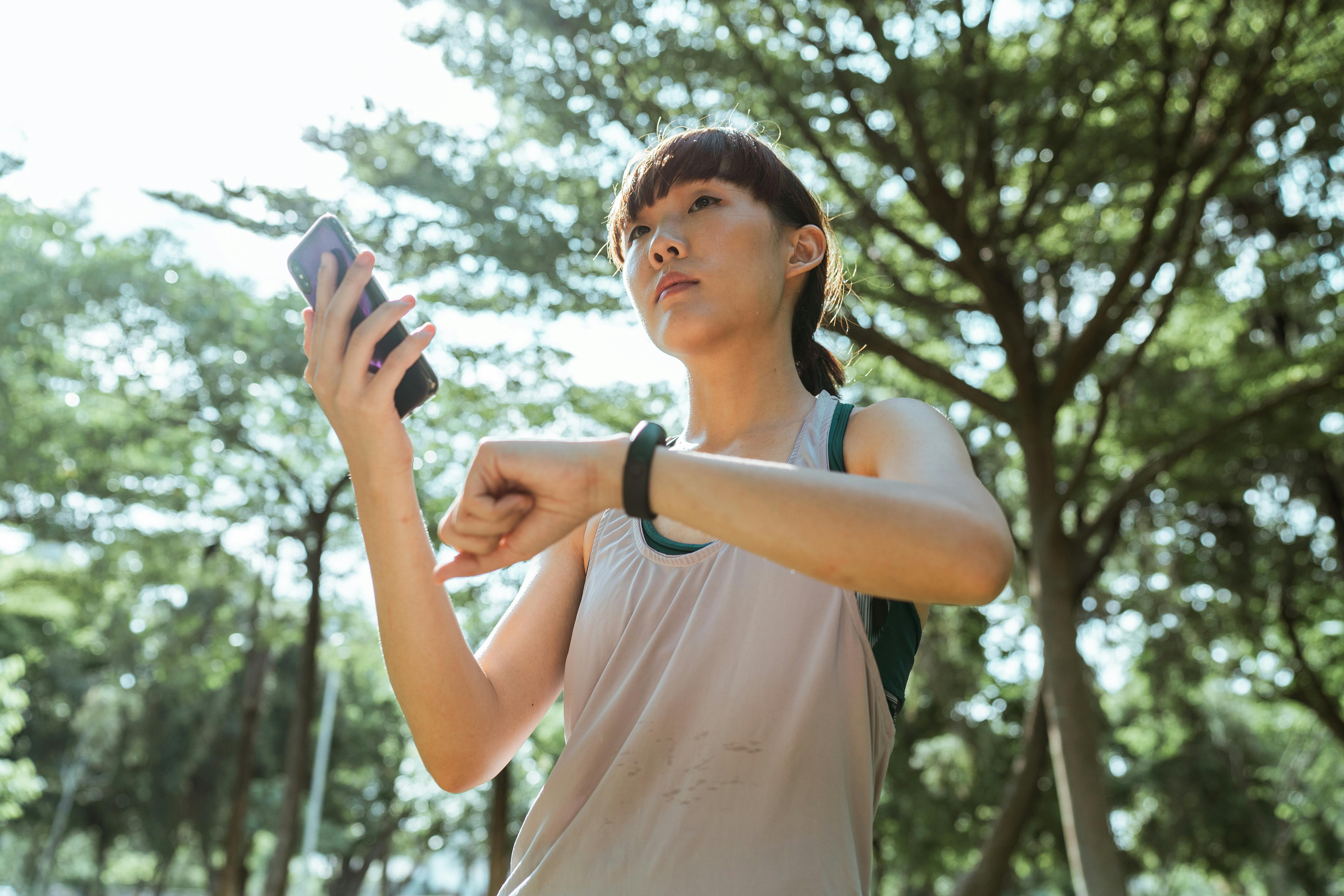
Once you have the essential gear sorted, there are several 'nice-to-have' items that can enhance your running experience as you become more consistent and increase your mileage. These items aren't strictly necessary to get started, but they can add convenience, improve your training, or simply make running more enjoyable. Let’s explore some of these helpful additions:
Running Watch/GPS: Tracking Your Progress
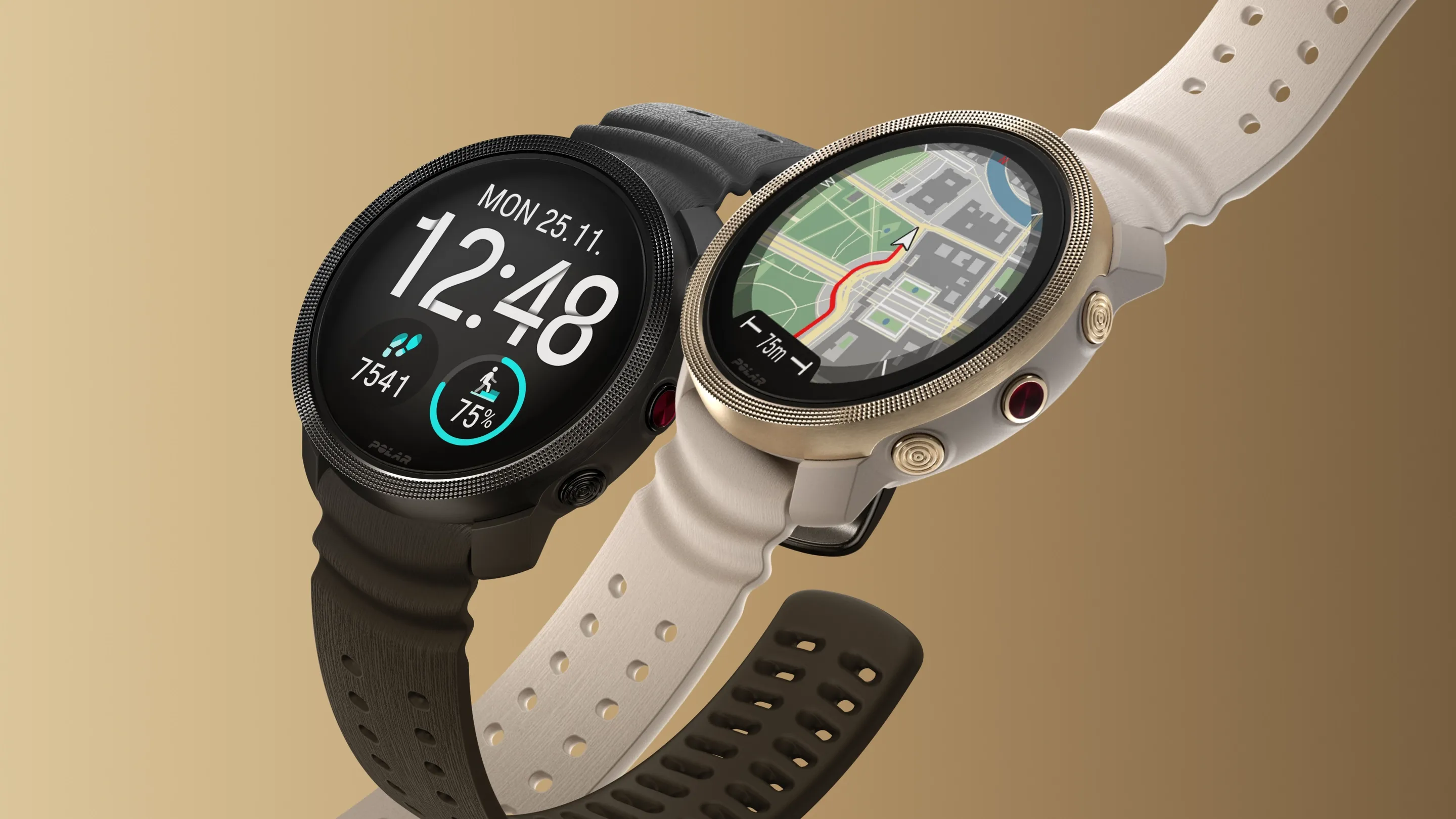
In today's tech-driven world, running watches have become increasingly popular. While you can certainly run without one, a running watch with GPS capabilities can be a valuable tool for tracking your progress, understanding your runs, and staying motivated. For beginners, a running watch is definitely in the 'nice-to-have' category, especially as you start to set goals and track your training more seriously.
Tracking Progress and Understanding Your Runs
A GPS running watch offers a wealth of data about your runs, which can be motivating and informative. Here are some key benefits:
- Distance and Pace Tracking: GPS accurately tracks how far you’ve run and your pace (minutes per mile or kilometer). This is essential for structured training, pacing yourself during runs, and monitoring your progress over time.
- Route Mapping: Many GPS watches map your runs, allowing you to see exactly where you’ve run, explore new routes, and share your runs with others if you choose.
- Time and Duration: Watches automatically track the duration of your runs.
- Heart Rate Monitoring (optional): Many running watches include heart rate monitors, either built-in to the wrist or via a chest strap. Heart rate data can help you train in the right intensity zones, monitor your effort levels, and track your fitness improvements.
- Cadence and Stride Length (more advanced models): Some watches provide more advanced metrics like cadence (steps per minute) and stride length, which can be helpful for refining your running form as you become more experienced.
- Data Logging and Analysis: Running watches typically sync with apps or online platforms that store your run data. This allows you to review your training history, track trends, and analyze your performance over weeks, months, and even years.
For beginners, simply knowing your distance and pace can be incredibly motivating. As you progress, heart rate monitoring and other metrics can provide deeper insights into your training and help you optimize your workouts.
When to Consider Investing in a Running Watch
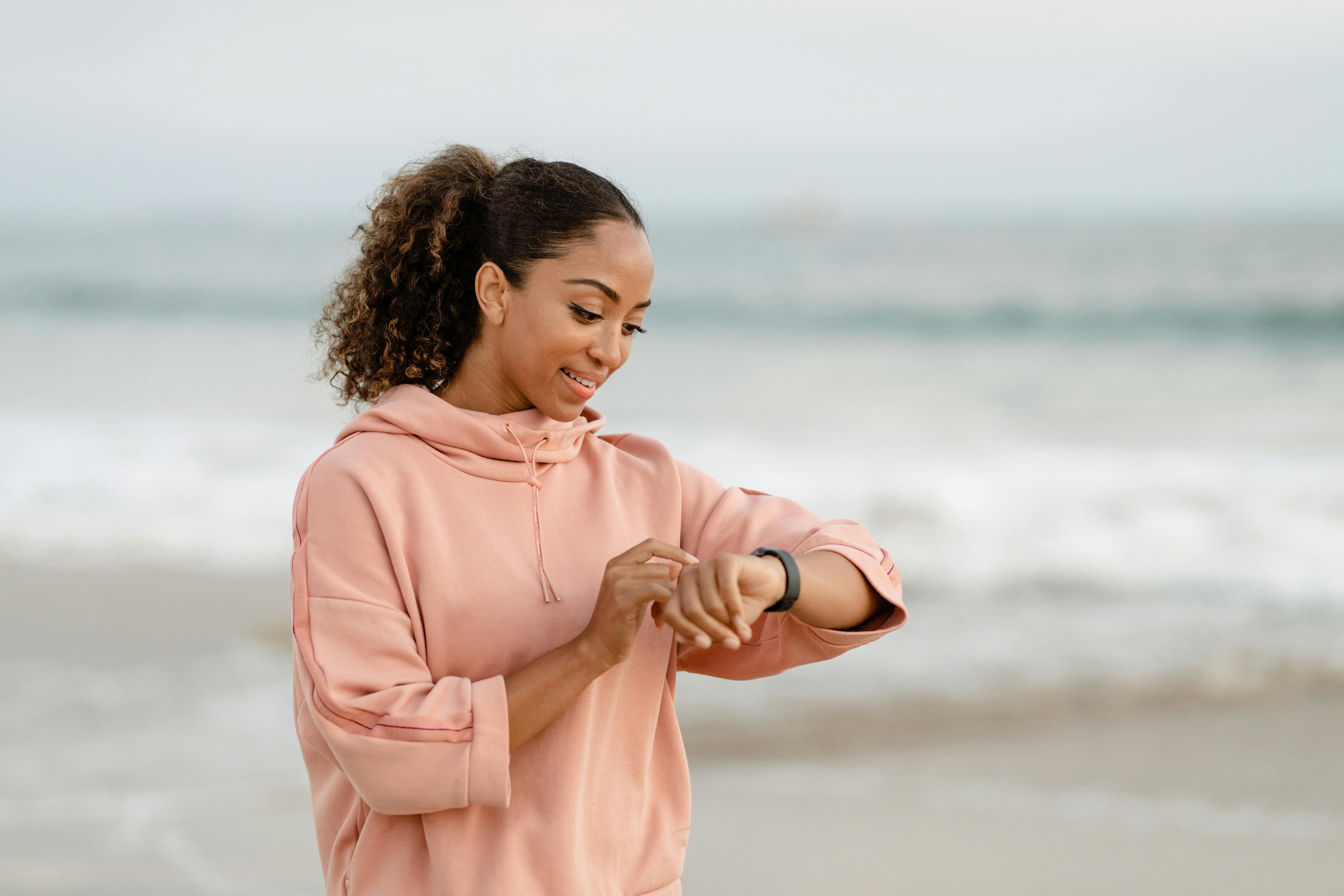
When should a beginner runner consider getting a running watch? Here are some scenarios:
- Setting Goals: If you’re starting to set specific running goals, like running a 5K race or increasing your weekly mileage, a running watch can be very helpful for tracking your progress towards those goals.
- Structured Training: If you’re following a training plan that involves specific distances or paces for different workouts (like interval training or tempo runs), a GPS watch makes it much easier to execute these workouts accurately.
- Motivation and Tracking Progress: Seeing your run data, tracking your improvements, and achieving personal bests can be highly motivating. If you enjoy data and tracking your progress, a running watch can be a great motivator.
- Longer Runs: As you start to run longer distances, knowing your pace and distance becomes more important for pacing yourself effectively and ensuring you complete your planned mileage.
For absolute beginners just starting with run-walk intervals or very short runs, a running watch might be overkill initially. You can certainly track your time and distance using a smartphone app or even just running by feel. However, as you become more serious about running, a dedicated running watch offers more accuracy, convenience, and features specifically designed for runners.
When choosing a running watch, consider your budget and needs. Basic GPS running watches are quite affordable and provide essential metrics like pace, distance, and time. More advanced models offer features like heart rate monitoring, music storage, smartphone notifications, and more detailed performance analytics. Start with a basic model and upgrade as your needs evolve. Brands like Garmin, Coros, Polar, and Suunto are popular choices for running watches.
Hydration Gear: Staying Hydrated on Longer Runs
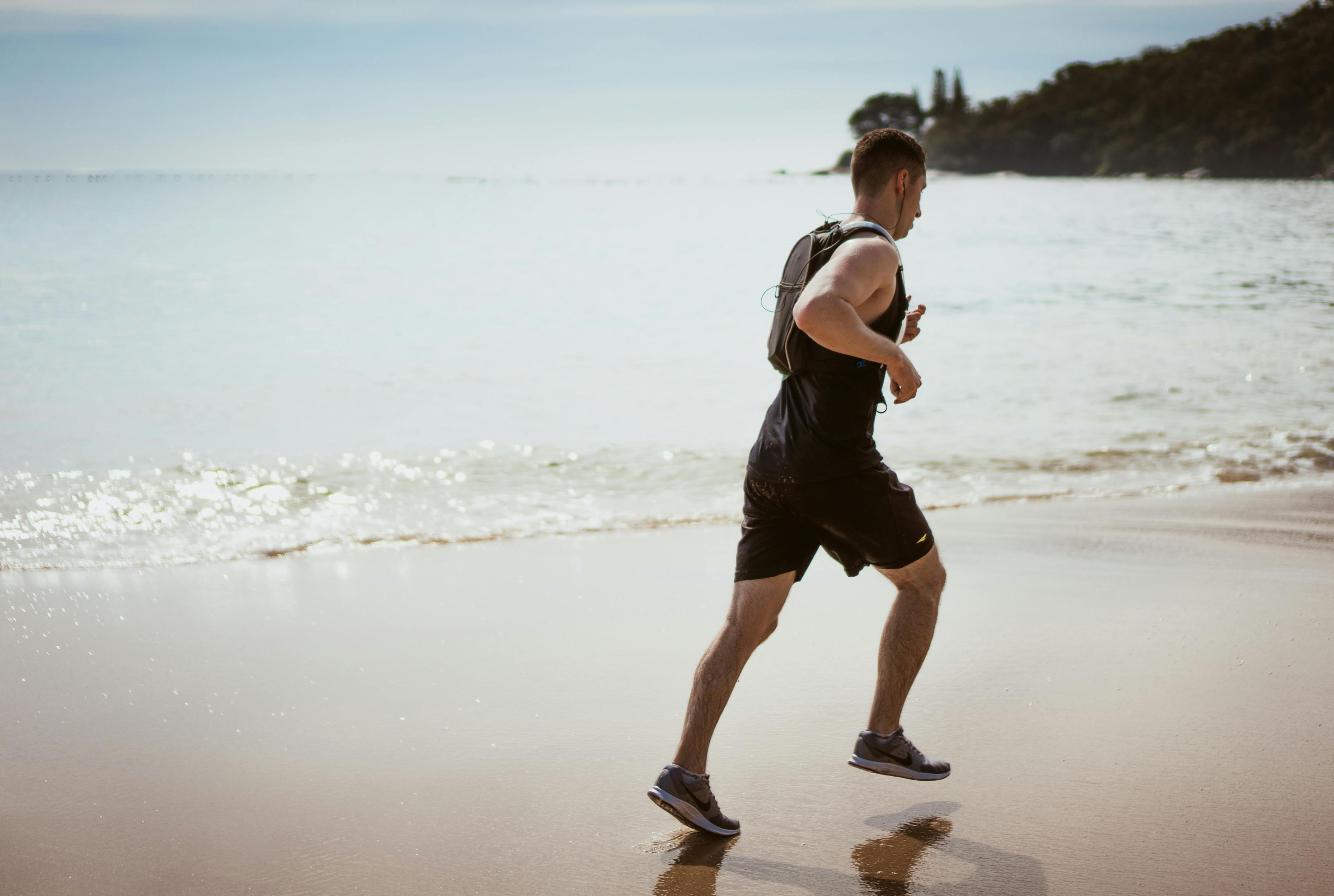
Staying hydrated is crucial for runners, especially on longer runs and in warm weather. While for short runs (under 30-45 minutes), you might not need to carry water with you, as your runs get longer, hydration gear becomes increasingly important. Let’s explore the options for carrying water and fluids while running.
Staying Hydrated During Your Runs
Dehydration can significantly impact your running performance and even pose health risks. Even mild dehydration can lead to fatigue, decreased performance, muscle cramps, and headaches. As you run, you lose fluids through sweat, and it’s important to replenish these fluids, especially on longer runs, in hot weather, or when running at a higher intensity.
How much water you need to carry depends on several factors, including:
- Run Duration: Longer runs require more hydration. For runs over 45-60 minutes, especially in warm weather, carrying fluids is generally recommended.
- Weather Conditions: Hot and humid weather increases sweat rate and fluid loss. You’ll need to drink more in warmer conditions.
- Individual Sweat Rate: Some people sweat more than others. Pay attention to how much you typically sweat during runs and adjust your hydration accordingly.
- Run Intensity: Higher intensity runs lead to more sweat loss compared to easy runs of the same duration.
As a general guideline, for runs lasting longer than an hour, especially in moderate to warm weather, aiming to drink about 4-8 ounces of fluid every 20-30 minutes is a good starting point. Adjust this based on your individual needs and conditions.
Types of Hydration Gear
Here are common types of hydration gear for runners:
- Handheld Water Bottles: These are bottles designed to be carried in your hand while running. They often have straps or grips to make them easier to hold. Handheld bottles are convenient for shorter to moderate runs when you need a smaller amount of water. They are simple and affordable, but carrying a bottle in your hand can sometimes feel a bit awkward or tiring on longer runs.
- Hydration Belts: Hydration belts are worn around your waist and typically have several small bottles or flasks attached. They distribute the weight around your waist, making them more comfortable than handheld bottles for longer runs. Some belts also have pockets for carrying gels, keys, or phones. Hydration belts are a good middle-ground option for runs where you need more water than a handheld but don’t want the bulk of a vest.
- Hydration Vests/Packs: Hydration vests are worn like backpacks and have reservoirs or flasks that can hold a significant amount of water. They are designed for longer runs, trail running, and races where you need to carry a substantial amount of fluids and possibly other gear (like gels, snacks, extra layers). Hydration vests distribute weight evenly across your back and shoulders and often have multiple pockets for storage. They are the most versatile option for longer distances but can be more expensive and feel warmer in hot weather compared to handhelds or belts.
- Water Fountains/Refills Along Your Route: If you run routes with access to water fountains or places where you can refill a bottle, you might not need to carry as much water. Plan your routes accordingly and know where you can access water.
For beginner runners, a handheld water bottle or a simple hydration belt with a few small bottles might be sufficient to start. As you increase your run distances and explore longer routes, you can consider a hydration vest. Experiment with different options to find what feels most comfortable and practical for your running needs.
Headphones and Music Devices: Music on the Run (Safely!)
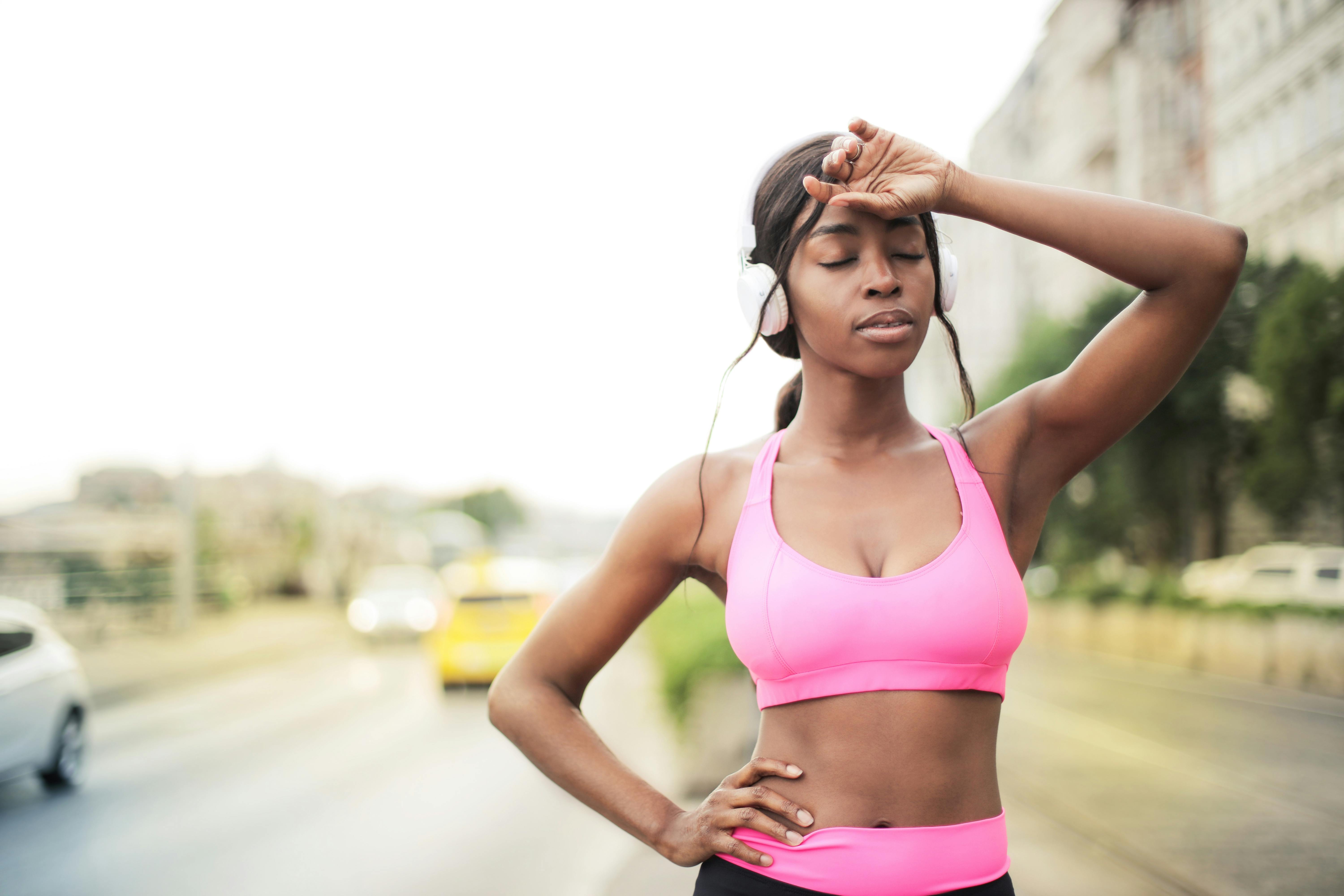
Many runners enjoy listening to music, podcasts, or audiobooks while running. It can be a great way to stay motivated, entertained, and make your runs more enjoyable. However, it’s essential to use headphones safely, especially when running outdoors. Let’s talk about the pros and cons of running with music and how to do it responsibly.
Motivation and Enjoyment with Music
Running with music can offer several benefits:
- Motivation and Energy Boost: Upbeat music can provide a psychological boost, making runs feel easier and more energetic, especially during tough workouts or when fatigue sets in.
- Distraction and Entertainment: Music, podcasts, or audiobooks can help distract you from the physical effort of running, making longer runs feel less monotonous and more enjoyable.
- Pace Setting (for some): Some runners find that music with a consistent beat can help them maintain a desired pace.
- Personal Enjoyment: For many, listening to music is simply a pleasurable part of their running routine, enhancing their overall enjoyment of the activity.
However, there are also safety considerations to keep in mind, especially when running outdoors in traffic or on shared paths.
Safety Considerations When Running with Headphones
Running with headphones can reduce your awareness of your surroundings, which can be dangerous in certain situations. Here are crucial safety tips:
- Volume Level: Keep the volume at a level where you can still hear ambient sounds like traffic, cyclists, and pedestrians. You should be able to hear what’s going on around you.
- Ambient Awareness Headphones: Consider using headphones specifically designed for running that allow ambient sound awareness. These might use bone conduction technology (which transmits sound through your cheekbones, leaving your ears open) or have features that let outside sounds in.
- One Earbud Only: Some runners prefer to wear only one earbud, leaving one ear completely open to hear surrounding sounds.
- Run in Safe Locations: Choose safer running routes, like dedicated running paths, parks, or quieter streets, especially if you plan to use headphones. Avoid running in heavy traffic areas or places with poor visibility while using headphones.
- Be Extra Vigilant: If you do use headphones, be extra vigilant about looking both ways before crossing streets, being aware of your surroundings, and paying attention to any potential hazards.
- Consider No Headphones Sometimes: It’s also beneficial to run without headphones sometimes to fully engage with your surroundings, practice mindfulness, and enhance your sensory experience of running.
Running with music is a personal choice. If you choose to do so, prioritize safety above all else. Ambient awareness headphones or running at a very low volume are the safest options. Always be aware of your surroundings and adjust your headphone use based on your running environment.
Gear You Can Skip (For Now)
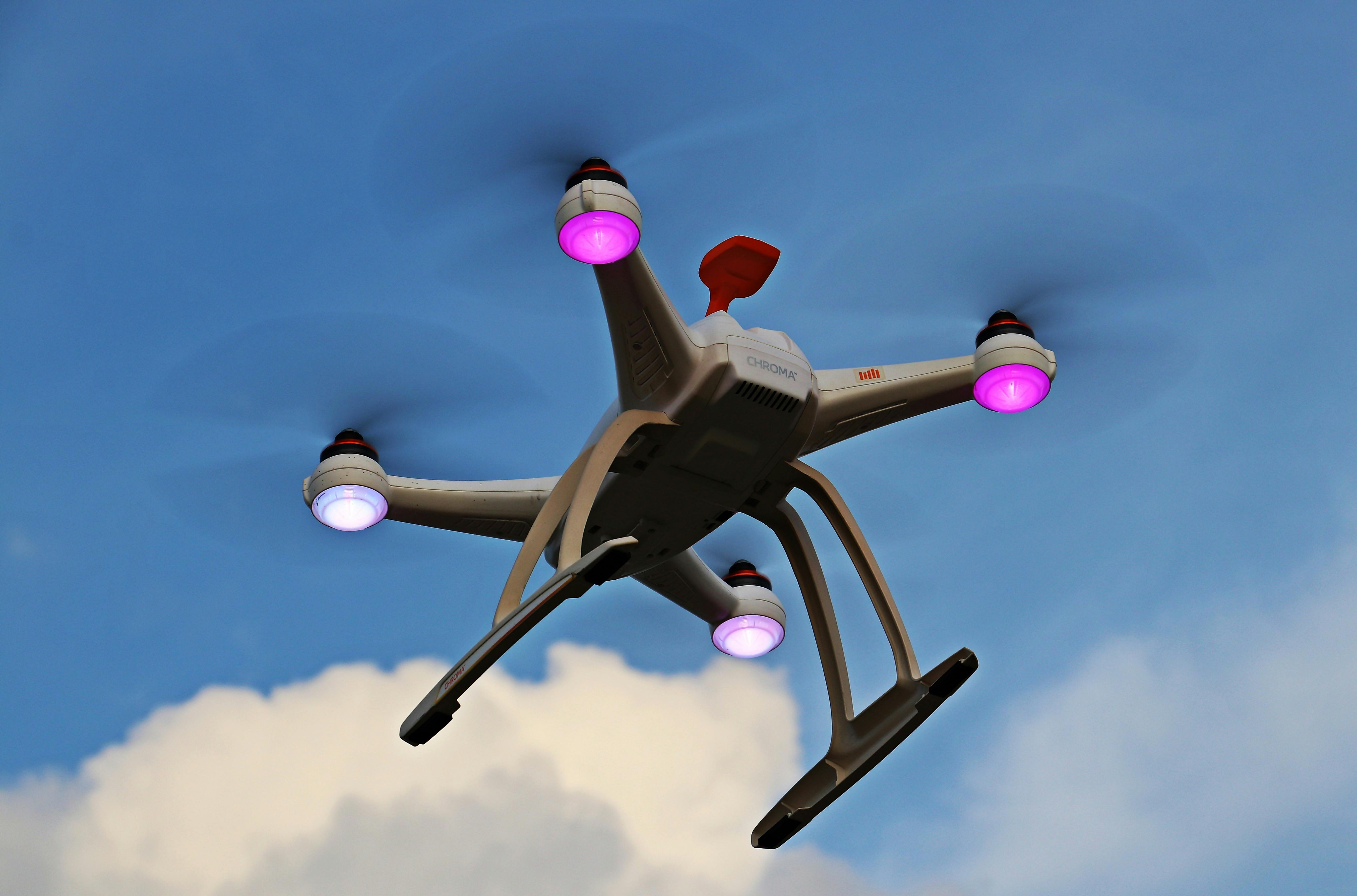
When you're just starting out with running, it's easy to get caught up in the hype around all sorts of running gadgets and specialized gear. Marketing can make it seem like you need a mountain of equipment to be a 'real' runner. But the truth is, especially as a beginner, there’s a lot of gear you can confidently skip, at least initially. Focus on the essentials first, and as you progress and your needs evolve, you can consider adding more specialized items. Let’s identify some gear you can skip for now.
High-Tech Gadgets: Avoiding Overwhelm
The world of running technology is vast and constantly evolving. From advanced heart rate monitors to foot pods, stride sensors, and recovery devices, there's no shortage of gadgets promising to optimize your running. While some of these tools can be valuable for experienced runners looking to fine-tune their performance, they are generally unnecessary and can even be overwhelming for beginners.
Why Beginners Can Skip High-Tech Gadgets (Initially)
Here’s why you can likely skip most high-tech running gadgets when you’re just starting out:
- Focus on the Basics First: As a beginner, your primary focus should be on establishing a consistent running routine, building a base level of fitness, and learning to enjoy running. Overcomplicating things with too much data and technology can be distracting and detract from these fundamental goals.
- Data Overload: Many high-tech gadgets generate a lot of data. For beginners, this data can be overwhelming and difficult to interpret. Understanding how to use this data effectively for training requires experience and knowledge.
- Cost: High-tech running gadgets can be expensive. It’s better to invest in essential gear like good running shoes and comfortable apparel first, rather than spending money on gadgets you might not fully understand or need yet.
- Potential for Distraction: Constantly monitoring metrics and data can sometimes distract you from listening to your body and running by feel, which is an important skill to develop, especially for beginners.
- Not Essential for Progress: You can make significant progress as a beginner runner simply by running consistently, gradually increasing your mileage, and listening to your body. You don’t need advanced technology to get started and see improvements.
Examples of Gadgets Beginners Can Skip (For Now)
Here are some examples of high-tech gadgets that beginners can confidently skip initially:
- Foot Pods and Stride Sensors: These devices provide detailed running dynamics data like cadence, stride length, vertical oscillation, and ground contact time. While interesting, this level of data is generally not necessary for beginner training. Focus on running consistently and comfortably first.
- Advanced Heart Rate Monitors (beyond basic wrist-based): Chest strap heart rate monitors are more accurate than wrist-based ones and are used by serious athletes for precise heart rate training. For beginners, a basic wrist-based heart rate monitor (often built into running watches) or even training by perceived effort is sufficient.
- Recovery Gadgets (expensive compression boots, etc.): While recovery is important, expensive gadgets like pneumatic compression boots or specialized recovery tools are not essential for beginners. Focus on basic recovery strategies like stretching, foam rolling, getting enough sleep, and proper nutrition.
- Specialized Running Apps with Complex Analytics: While running apps can be helpful, beginners don't need apps with overly complex analytics and training plans right away. Simple apps for tracking distance, pace, and time are sufficient to start.
As you become a more experienced runner and start to understand your training needs better, you can revisit the idea of incorporating some high-tech gadgets. But in the beginning, keep it simple, focus on the joy of running, and don’t feel pressured to buy every gadget marketed towards runners.
Expensive Apparel and Accessories: Budget-Friendly Alternatives
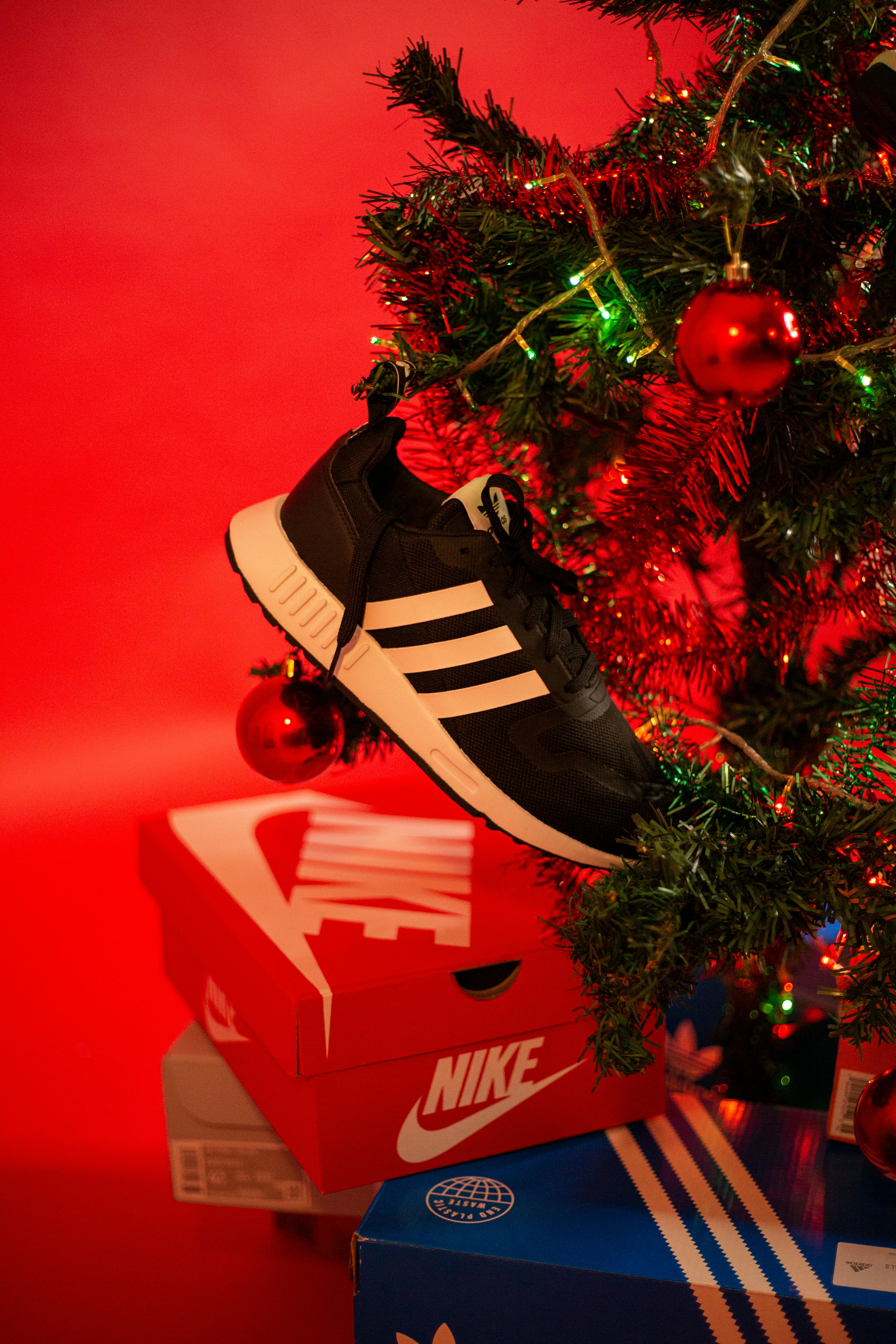
The running apparel and accessories market is filled with premium brands and high-priced items. While high-quality gear can be beneficial, especially for experienced runners pushing their limits, beginners don’t need to break the bank on expensive brands right away. There are plenty of budget-friendly alternatives that offer excellent performance and comfort.
Prioritizing Function Over Brand Names
When it comes to running apparel and accessories for beginners, prioritize function and fit over brand names and designer labels. Focus on these key aspects:
- Moisture-Wicking Fabrics: Ensure your apparel is made from moisture-wicking materials (synthetic blends or merino wool), regardless of the brand.
- Comfortable Fit: Choose apparel that fits well, allows for free movement, and feels comfortable against your skin.
- Appropriate for Weather: Select apparel layers that are suitable for the weather conditions you’ll be running in (warm, cold, rain, wind).
- Functionality: Look for features that enhance functionality, like reflective elements for safety, pockets for keys or gels, and breathable fabrics.
You can find running apparel that meets these functional criteria without spending a fortune on high-end brands. Many affordable brands and store-brand options offer excellent performance at a fraction of the price.
Budget-Friendly Apparel and Accessory Options
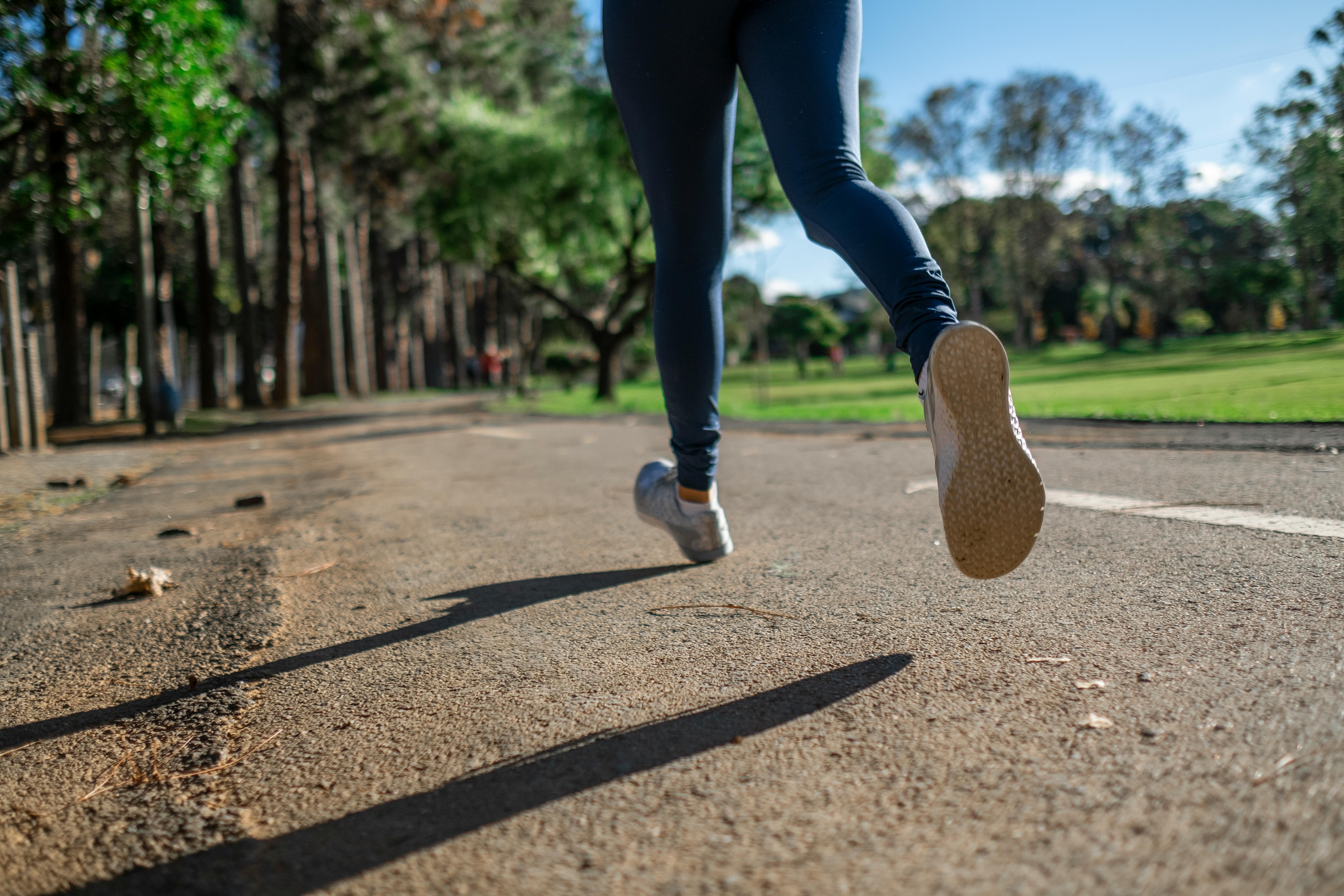
Here are some tips for finding budget-friendly running apparel and accessories:
- Look for Sales and Discounts: Many sporting goods stores and online retailers have sales and clearance sections where you can find discounted running apparel from reputable brands. Shop end-of-season sales or holiday sales for good deals.
- Outlet Stores: Outlet stores for major sporting brands often carry slightly older models or overstock items at reduced prices. You can find excellent deals on functional running apparel at outlet stores.
- Generic Brands and Store Brands: Don’t underestimate generic brands or store brands from large sporting goods retailers. These often offer surprisingly good quality and performance at much lower prices than premium brands. Look for items specifically labeled as 'running' or 'performance' apparel and check the material composition (moisture-wicking fabrics).
- Start with Essentials: Focus on buying just the essential apparel items you need to get started (a few moisture-wicking tops, shorts or tights, running socks). You can gradually add more items as needed and as your budget allows.
- Read Reviews: Before buying unfamiliar brands or generic items, read online reviews to get an idea of the quality and performance from other runners.
You don’t need to wear head-to-toe designer running gear to be a successful or comfortable runner. Focus on function, fit, and moisture-wicking properties, and explore budget-friendly options to get started without overspending.
Specialized Running Equipment: Focus on Basics First
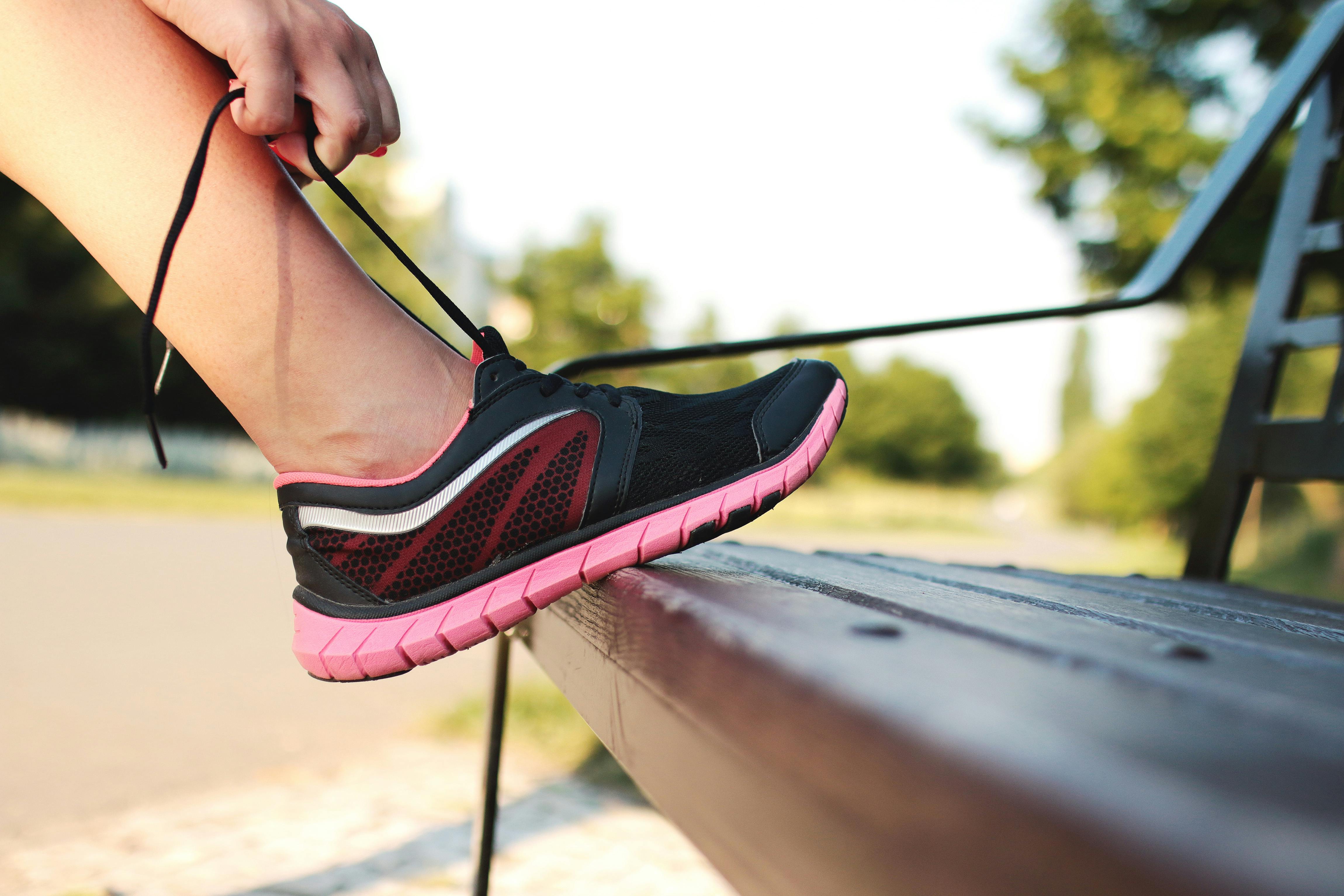
As you delve deeper into the world of running, you’ll discover a wide array of specialized equipment designed for specific types of running or performance goals. While some of this equipment can be beneficial for experienced runners with specific needs, beginners should focus on mastering the basics and building a solid foundation before investing in specialized gear.
Mastering Running Basics Before Specializing
For beginner runners, the priority should be on:
- Developing a Consistent Running Routine: Establishing a regular running habit and making running a sustainable part of your lifestyle is the most important thing.
- Building Aerobic Fitness: Focus on easy, conversational-pace running to build your aerobic base and endurance.
- Learning Proper Running Form: Pay attention to your posture, cadence, and stride to develop efficient and injury-preventive running form.
- Listening to Your Body: Learn to recognize your body's signals, understand the difference between discomfort and pain, and prioritize rest and recovery.
Once you have a solid foundation in these basics, you can start thinking about more specialized equipment if your running goals or interests lead you in that direction.
Examples of Specialized Equipment Beginners Can Skip (Initially)
Here are examples of specialized running equipment that beginners can skip initially:
- Trail Running Shoes: Trail running shoes are designed for off-road running on trails, with more aggressive outsoles for traction and often more protection. If you plan to run exclusively on roads or paved paths as a beginner, trail shoes are unnecessary. Start with road running shoes. You can consider trail shoes later if you decide to explore trail running.
- Racing Flats: Racing flats are lightweight, minimal running shoes designed for fast racing. They offer very little cushioning and support and are intended for experienced runners on race day. Beginners should train in regular running shoes and avoid racing flats until they are more experienced and have built up foot and leg strength.
- Compression Gear (unless needed for comfort): Compression socks, sleeves, and tights are popular among some runners, claimed to improve circulation, reduce muscle fatigue, and aid recovery. While some runners find them beneficial, there’s limited scientific evidence to strongly support these claims, especially for beginners. Unless you find compression gear comfortable or have been specifically recommended to use it for a medical reason, it’s not essential for starting out.
- GPS Watches with Advanced Features (beyond basic tracking): As discussed earlier, basic GPS watches are nice-to-have. But models with highly advanced features like running power metrics, detailed training load analysis, and complex recovery recommendations are not needed for beginners.
- Specialized Nutrition Products (gels, chews, etc., for short runs): For shorter runs (under 60-75 minutes), you generally don’t need to consume specialized nutrition products like energy gels or chews. Focus on proper hydration and a balanced diet. These products become more relevant for longer runs and races.
As you progress as a runner and perhaps set specific goals like trail running or racing, you can explore specialized equipment that aligns with your evolving needs. But in the beginning, keep it simple, focus on the fundamentals, and don’t feel pressured to invest in specialized gear prematurely.
Tips for Buying Running Gear

Now that you know what essential gear you need and what you can skip for now, let’s talk about some practical tips for buying your running gear wisely. Being smart about your gear purchases can save you money, ensure you get the right items, and set you up for a successful running journey. Here are some key tips for buying running gear, especially for beginners:
Budgeting for Gear: Smart Spending Strategies

Running can be a very affordable sport, especially compared to many gym-based activities or team sports. However, the costs of running gear can add up if you’re not careful. Creating a budget for your running gear and adopting smart spending strategies can help you get what you need without overspending.
Tips for Budgeting Your Running Gear
Here are some practical tips for budgeting your running gear expenses:
- Prioritize Essentials: Focus your initial budget on the most essential items: good running shoes, moisture-wicking apparel (a few basic pieces), and running socks. These are the items that will have the biggest impact on your comfort and injury prevention.
- Start with Mid-Range Options: You don’t need the most expensive or top-of-the-line gear to start running. Mid-range running shoes and apparel from reputable brands often offer excellent performance and durability at a more reasonable price than premium models.
- Set a Budget Limit: Decide on a total budget you’re comfortable spending on running gear initially. This will help you make informed choices and avoid impulse purchases.
- Shop Sales and Discounts: As mentioned earlier, look for sales, clearance sections, and outlet stores to find discounted running gear. Planning your purchases around sales seasons can save you a significant amount of money.
- Consider Generic Brands or Store Brands: Explore generic brands or store brands from large sporting goods retailers for more affordable options, especially for apparel.
- Gradually Build Your Gear Collection: You don’t need to buy everything at once. Start with the absolute essentials and gradually add to your gear collection as you run more and as your budget allows. You can spread out your gear purchases over time.
- Research and Compare Prices: Before making a purchase, especially for running shoes or higher-priced items, do some research online to compare prices at different retailers. Look for deals and promotions.
- Take Care of Your Gear: Properly care for your running gear to extend its lifespan. Wash your running apparel according to care instructions, air out your shoes after each run, and replace gear only when it’s genuinely worn out or no longer functional.
Remember, running is about the experience and the health benefits, not about having the most expensive gear. Focus on getting functional, comfortable gear within your budget, and prioritize the essentials that will support your running journey.
Sales and Discounts: Timing Your Purchases Right

One of the best ways to save money on running gear is to take advantage of sales and discounts. Knowing when and where to look for deals can significantly reduce your gear expenses. Here are some strategies for timing your purchases right and finding sales and discounts on running gear:
Best Times to Buy Running Gear on Sale
Here are the typical times of year when you’re likely to find good sales on running gear:
- End-of-Season Sales: Retailers often have end-of-season sales to clear out inventory and make room for new seasonal collections. For running gear, you’ll often find good sales at the end of summer (August-September) as retailers make space for fall/winter gear, and at the end of winter/early spring (February-March) as they transition to spring/summer collections.
- Holiday Sales: Major holidays like Black Friday (November), Cyber Monday (following Black Friday), Christmas/December holidays, and sometimes Memorial Day (May) and Labor Day (September) are often associated with significant sales events. Many sporting goods stores and online retailers offer discounts on running gear during these periods.
- Anniversary Sales and Brand-Specific Sales: Keep an eye out for anniversary sales at specialty running stores or brand-specific sales events from major running shoe and apparel brands. Sign up for email newsletters from your favorite running retailers to get notifications about upcoming sales.
- Outlet Stores Year-Round: Outlet stores for major sporting brands often offer discounted gear year-round. While the selection might be less current than in regular retail stores, you can often find excellent deals on functional running apparel and shoes at outlet prices.
- Online Retailer Sales: Online retailers frequently have sales and promotional events throughout the year. Check websites like Amazon, Running Warehouse, and other online sporting goods retailers regularly for deals.
Tips for Finding and Maximizing Sales
Here are some tips for finding and maximizing sales and discounts on running gear:
- Sign Up for Email Newsletters: Subscribe to email newsletters from your favorite running shoe and apparel brands, specialty running stores, and online retailers. You’ll often receive early notifications about upcoming sales and exclusive discounts.
- Follow Social Media: Follow your favorite running brands and retailers on social media (Facebook, Instagram, Twitter). They often announce sales and promotions on their social media channels.
- Use Price Comparison Websites and Apps: Use price comparison websites or apps to check prices across different retailers for specific items you’re interested in. This can help you find the best deal available.
- Check Clearance Sections Regularly: Browse the clearance sections of online and physical stores frequently. Inventory in clearance sections changes, and you might find hidden gems and great deals if you check regularly.
- Be Flexible with Colors and Styles: You might find deeper discounts on less popular colors or slightly older styles. If you’re not too particular about aesthetics, being flexible with colors and styles can lead to bigger savings.
- Buy Off-Season: Consider buying gear off-season. For example, you might find better deals on winter running apparel in the spring or summer, and better deals on summer apparel in the fall or winter.
By being strategic and timing your purchases around sales events and discounts, you can significantly reduce your running gear expenses and make your budget go further.
Testing and Trying: Ensuring the Right Fit and Feel
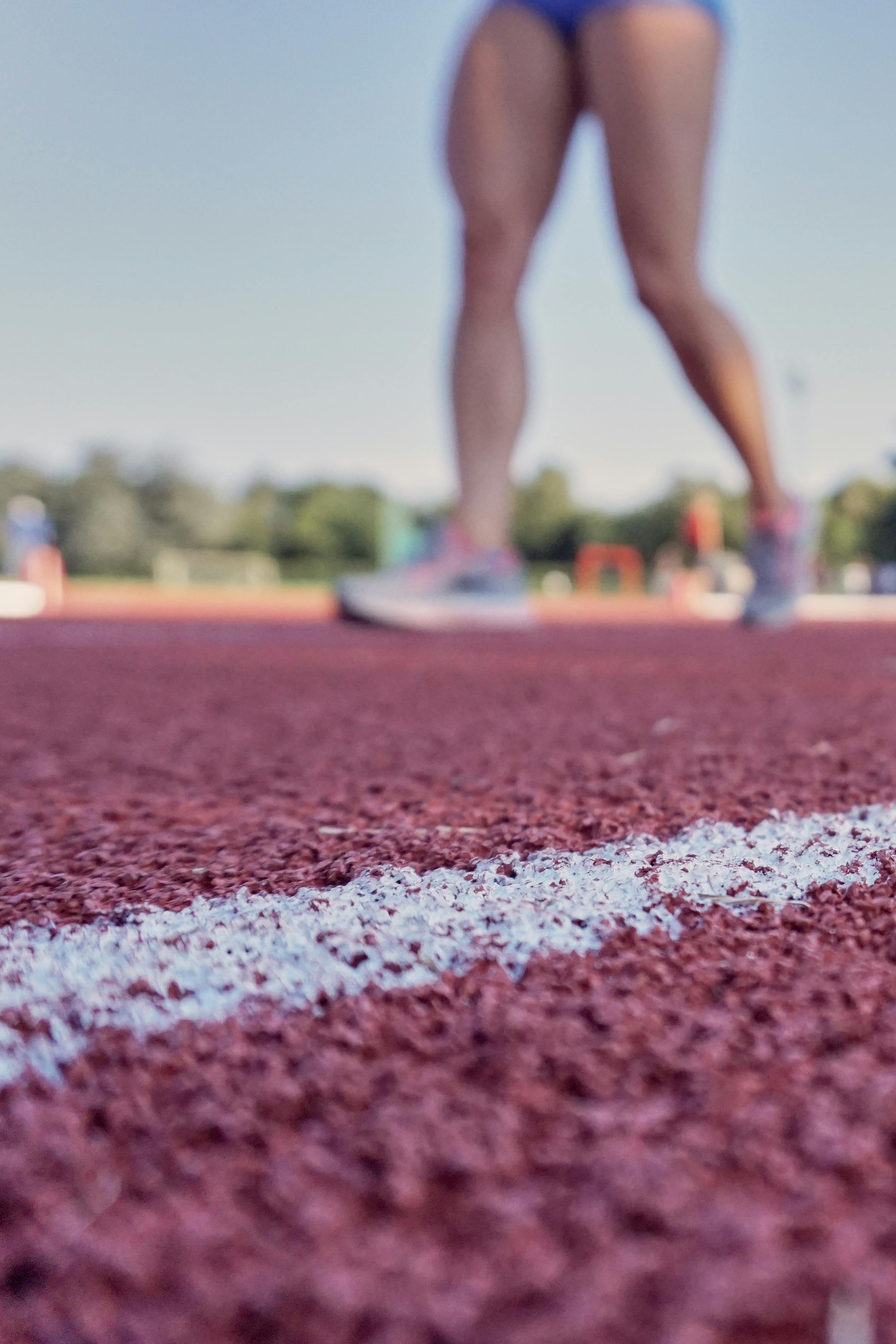
When it comes to running gear, especially running shoes, ensuring the right fit and feel is crucial for comfort and performance. Unlike fashion apparel, where fit is often more forgiving, running gear needs to function optimally during physical activity. Testing and trying gear before you commit to a purchase is highly recommended, especially for beginners.
Importance of Trying On Running Shoes In-Store
For running shoes, trying them on in a physical store is almost essential, particularly for your first pair and whenever you’re trying a new model or brand. Here’s why:
- Accurate Sizing: Running shoe sizes can vary between brands and even models within the same brand. Your street shoe size might not be the same as your running shoe size. Trying shoes on allows you to determine the correct size and fit for your feet.
- Assessing Fit and Comfort: You need to feel how the shoes fit and feel on your feet while standing, walking, and ideally, doing a short jog in the store (many specialty running stores have treadmills for this purpose). You can check for proper toe box room, heel slippage, and overall comfort.
- Getting Expert Advice: Staff at specialty running stores can assess your feet, watch you walk or run, and provide expert recommendations on shoe types and models that are suitable for your foot type and running style. They can also help with fitting and answer any questions you have.
- Trying Different Models: Trying on shoes in-store allows you to compare different models and brands side-by-side and see which feels best on your feet.
- Immediate Feedback: You get immediate feedback on how the shoes feel and fit. You can identify any potential discomfort or fit issues before you buy them and take them out for a run.
While online shopping for running shoes can be convenient, especially if you know your size and preferred models, for beginners and when trying new shoes, the in-person experience at a specialty running store is invaluable.
Tips for Testing and Trying Gear
Here are some general tips for testing and trying running gear:
- Try Shoes On in the Afternoon/Evening: Feet tend to swell throughout the day, so it’s best to try on running shoes in the afternoon or evening when your feet are likely to be slightly larger, similar to how they might be after a run.
- Wear Running Socks When Trying Shoes: Wear the type of running socks you plan to run in when you try on running shoes. This will ensure accurate fit assessment.
- Walk and Jog in Shoes In-Store: Walk around in the shoes in the store and, if possible, do a short jog on a treadmill or in the store to get a feel for them in motion.
- Check for Proper Toe Box Room: Ensure you have about a thumb’s width of space between your longest toe and the end of the shoe when standing. Your toes should be able to wiggle freely.
- Assess Heel Fit: Your heel should feel secure and not slip excessively when you walk or jog.
- Check for Midfoot Snugness: The shoe should feel snug but not tight around your midfoot. It should provide support without being constricting.
- Try Apparel On and Move Around: When trying on running apparel, move around, stretch, and mimic running motions to ensure the apparel allows for free movement and is comfortable in motion.
- Check Return Policies: If you do buy running shoes online or from a store with a less flexible return policy, always check the return policy. Ideally, choose retailers that allow returns or exchanges even if you’ve worn the shoes for a short test run (within a reasonable timeframe and condition).
Investing time in testing and trying running gear, especially shoes, will pay off in comfort, performance, and injury prevention. Don’t rush the process, and make sure you’re confident in the fit and feel before making a purchase.
Building Your Gear Over Time
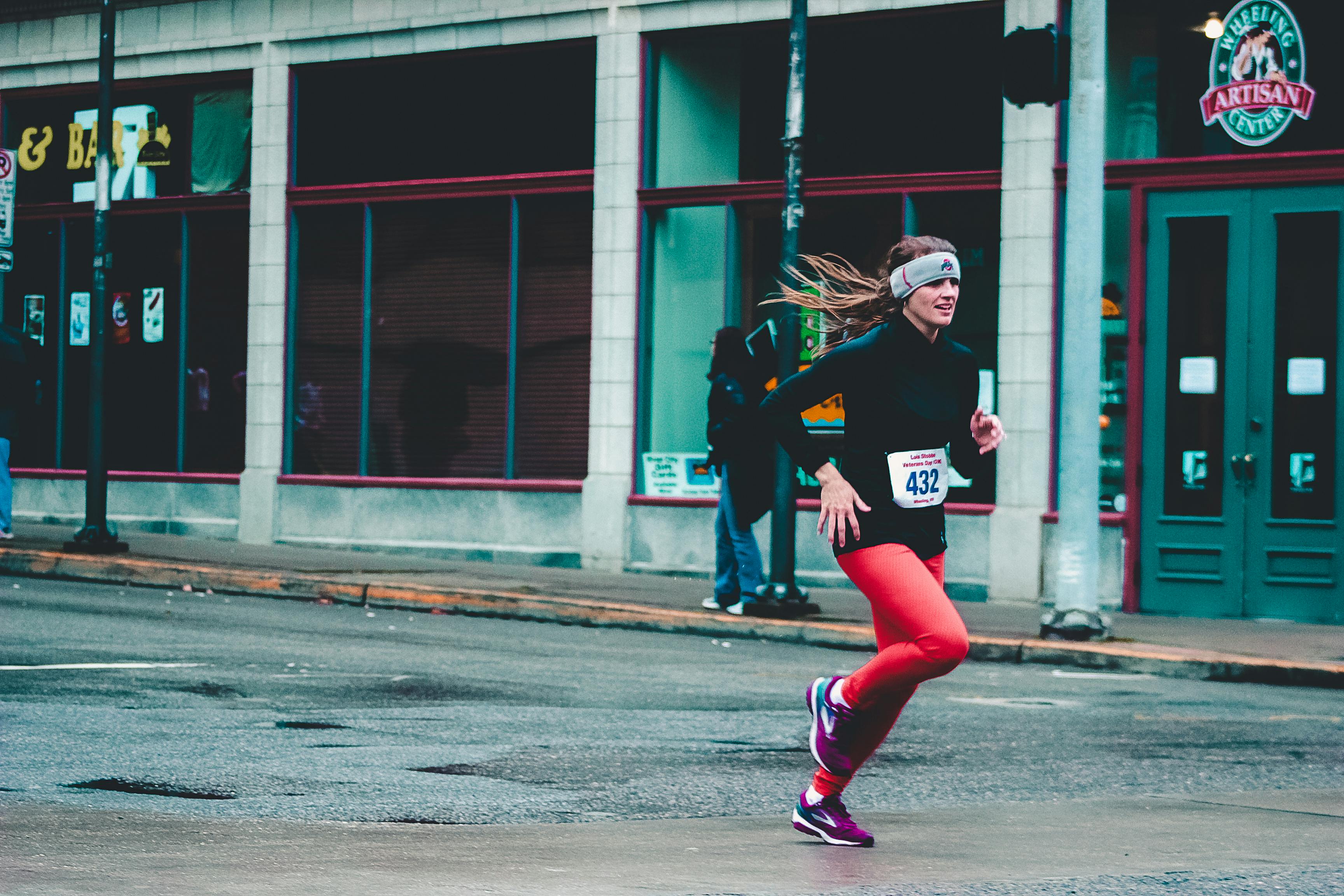
As you progress in your running journey, your gear needs will likely evolve. What you need as a beginner might be different from what you need as you increase your mileage, set new goals, or start running in different conditions. Building your running gear collection over time, rather than buying everything at once, is a smart and sustainable approach. Let’s explore how your gear needs might change and how to build your gear collection gradually.
Evolving with Your Running: Adapting to New Needs
As you run more consistently and progress in your training, your running gear needs might change in several ways:
Changes in Running Distance and Frequency
As you increase your weekly mileage and run longer distances, you might find that:
- Hydration Needs Increase: For longer runs, you’ll need to carry fluids and possibly nutrition. Hydration gear like handheld bottles, belts, or vests become more essential.
- Apparel Needs Change: For longer runs, especially in varying weather conditions, you might need a more comprehensive range of apparel layers to stay comfortable in different temperatures and conditions.
- Shoe Mileage Accumulates Faster: If you’re running more miles per week, your running shoes will wear out faster. You’ll need to replace them more frequently.
- Recovery Becomes More Important: As training intensity and volume increase, recovery becomes more critical. You might consider adding recovery tools like foam rollers or massage balls to your gear collection (though these aren't strictly 'gear' in the clothing sense).
Changing Running Goals and Interests
As you become more experienced, your running goals and interests might evolve:
- From Beginner to Intermediate/Advanced: As you progress from a beginner to an intermediate or advanced runner, you might start incorporating more structured training, speed workouts, and long runs. This might lead you to consider more advanced running watches with heart rate monitoring and performance metrics.
- Exploring Trail Running: If you decide to venture into trail running, you’ll need trail running shoes with better traction and protection, and possibly trail-specific hydration vests or packs.
- Racing: If you decide to participate in races, you might consider racing-specific gear like lightweight racing flats (for experienced racers), race belts for gels, and performance-oriented apparel.
- Running in Different Weather Conditions: If you start running in a wider range of weather conditions (e.g., winter running, summer heat), you’ll need appropriate apparel for those conditions, like insulated jackets, thermal tights, or lightweight, breathable summer apparel.
Listening to Your Body and Adjusting Gear
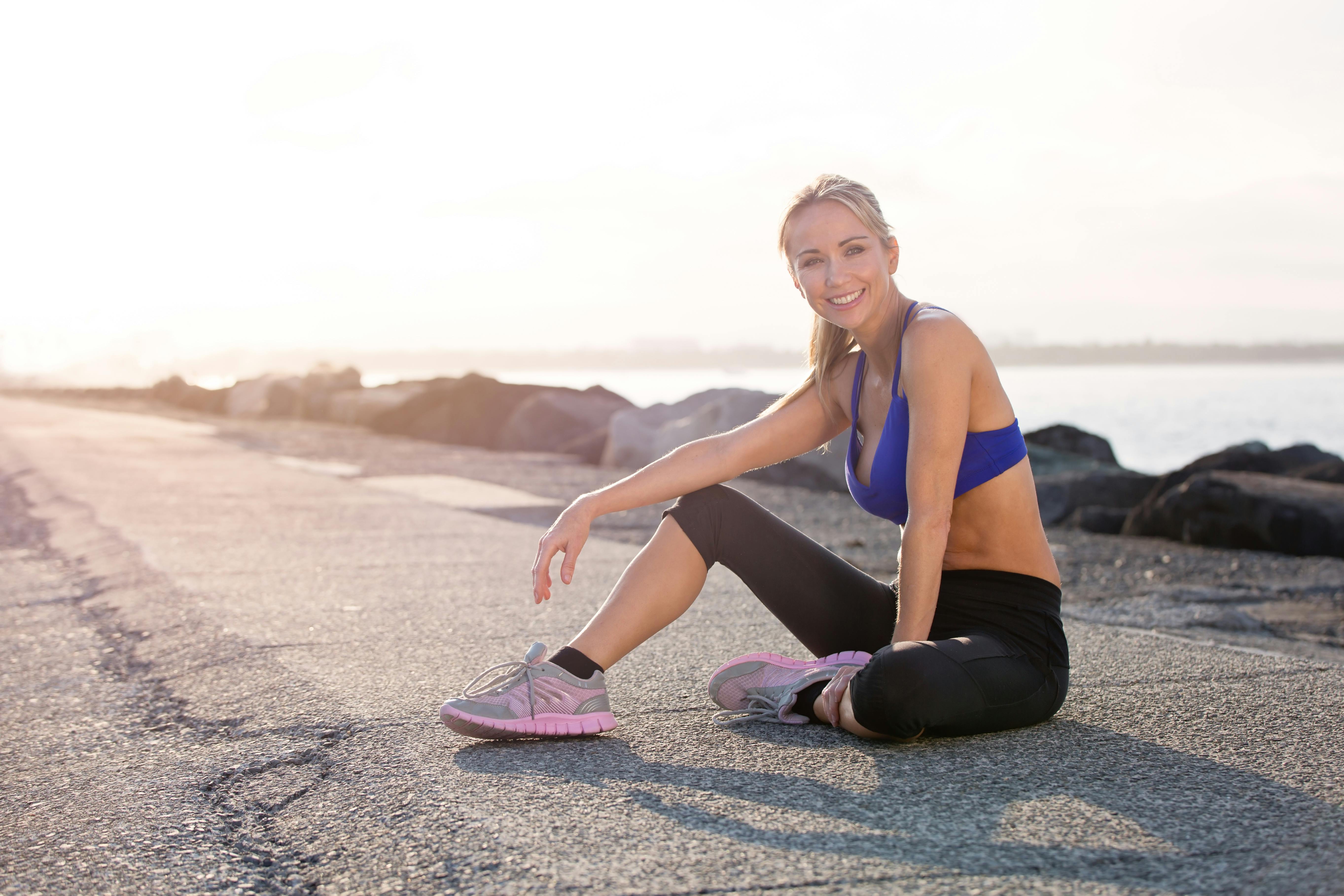
The most important factor in building your gear over time is listening to your body and adjusting your gear based on your individual needs and experiences. Pay attention to:
- Comfort: Is your gear comfortable throughout your runs? Are you experiencing any chafing, discomfort, or irritation? Adjust your apparel or socks if needed.
- Performance: Is your gear helping you perform optimally? Are your shoes providing adequate cushioning and support? Is your apparel keeping you dry and at a comfortable temperature?
- Injury Prevention: Are you experiencing any running-related injuries? Review your gear to ensure it’s contributing to injury prevention, especially your running shoes.
- Weather Conditions: Is your gear appropriate for the current weather conditions? Adjust your apparel layers based on temperature, wind, and rain.
- Personal Preferences: Develop your own preferences for gear based on your experiences. Some runners prefer looser fitting apparel, while others prefer snug-fitting. Some prefer heavily cushioned shoes, while others prefer a more minimal feel. Experiment and find what works best for you.
Building your running gear collection is an ongoing process. Start with the essentials, gradually add gear as your needs evolve, and always prioritize comfort, function, and listening to your body. Your gear should support and enhance your running journey, not complicate it.
Listening to Your Body: The Ultimate Gear Guide

In the end, the best gear guide is your own body. No matter how many articles you read or expert recommendations you get, your body’s feedback is the ultimate guide to what gear works best for you. Learning to listen to your body’s signals is crucial for choosing the right gear, preventing injuries, and maximizing your running enjoyment.
Pay Attention to Comfort and Discomfort
During and after your runs, pay close attention to how your body feels in your gear. Notice:
- Foot Comfort: Do your feet feel comfortable in your running shoes? Are there any pressure points, rubbing, or blisters developing? Are your toes feeling cramped or do you have enough room?
- Apparel Comfort: Is your apparel comfortable against your skin? Is it allowing for free movement? Is it wicking away sweat and keeping you dry? Are you feeling too hot, too cold, or just right in your clothing?
- Body Sensations: Are you experiencing any pain, chafing, or discomfort in any part of your body while running? Consider if your gear might be contributing to these issues. For example, chafing might be related to your apparel, and foot pain might be related to your shoes.
- Post-Run Recovery: How do you feel after your runs? Are you experiencing excessive muscle soreness or fatigue? While gear isn’t solely responsible for recovery, comfortable and supportive gear can contribute to a more positive recovery experience.
Your body is constantly giving you feedback. Learn to tune into these signals and adjust your gear choices accordingly.
Adjusting Gear Based on Feedback
Based on your body’s feedback, be prepared to adjust your gear. This might mean:
- Trying Different Running Shoes: If you’re experiencing discomfort or pain in your feet or legs, it might be time to re-evaluate your running shoes. Visit a specialty running store, get your gait analyzed again if needed, and try different models.
- Experimenting with Apparel: If you’re experiencing chafing or discomfort with your apparel, try different styles, fabrics, or sizes. Consider using anti-chafing balms in problem areas.
- Changing Socks: If you’re getting blisters, try different running socks with seamless toes or different materials.
- Layering Up or Down: Adjust your apparel layers based on the weather conditions and how warm or cold you feel during your runs.
- Adjusting Hydration Strategy: If you’re feeling dehydrated during or after runs, increase your fluid intake and consider carrying more water on longer runs.
Remember, there’s no one-size-fits-all solution when it comes to running gear. What works perfectly for one runner might not work for another. Your body is unique, and your gear choices should be tailored to your individual needs and preferences. Listen to your body, experiment, and find the gear that helps you run comfortably, safely, and enjoyably. Your body is the best gear guide you’ll ever have.
Conclusion
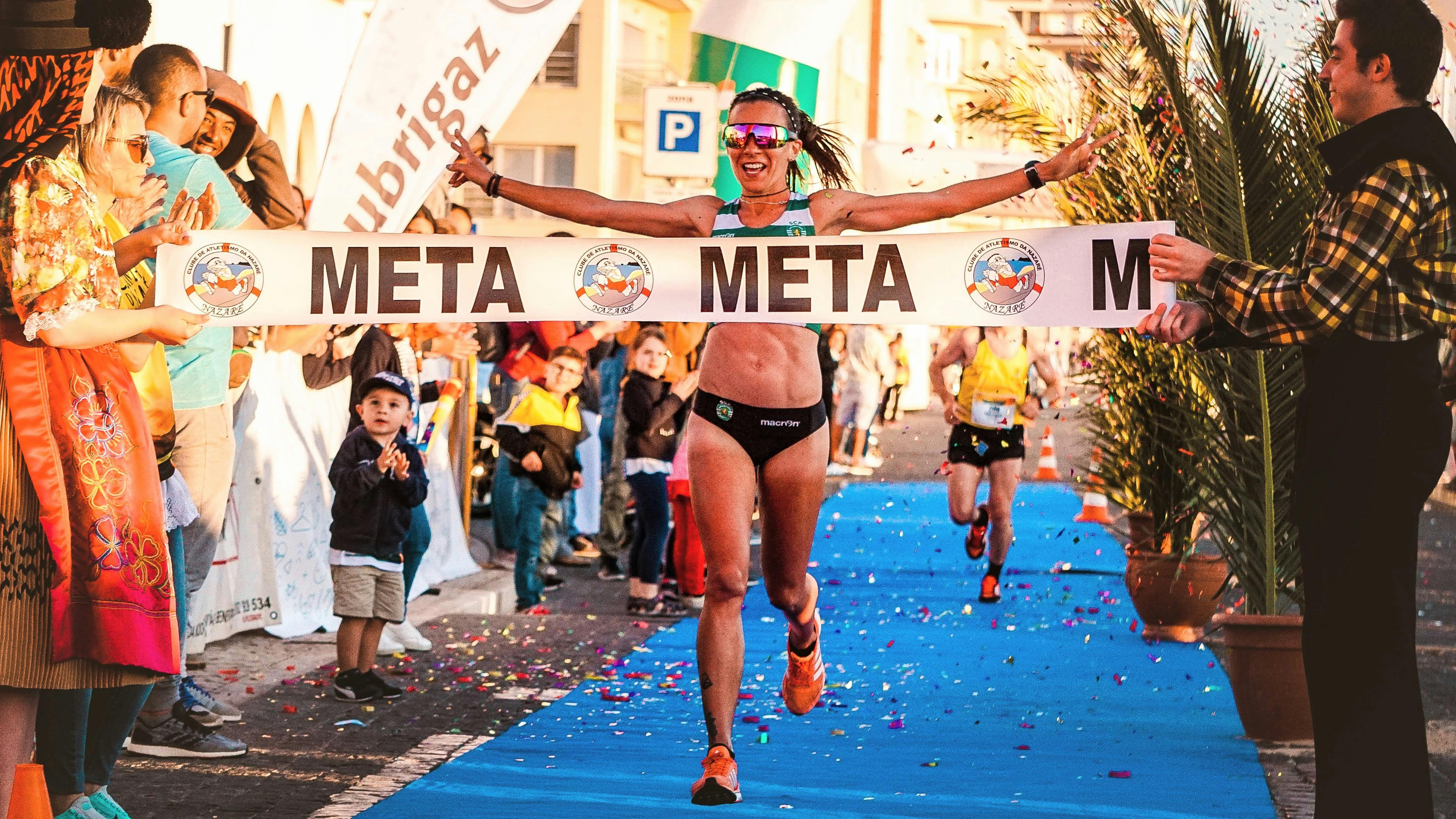
Congratulations on taking your first steps into the world of running! As you’ve learned, getting started with running doesn't require a mountain of expensive or complicated gear. The key is to focus on the essentials, prioritize comfort and function, and build your gear collection gradually as your running journey progresses.
Starting Simple and Building Confidence
Remember the core message: start simple. Invest in a good pair of running shoes that fit you well and are appropriate for your foot type and running surface. Choose moisture-wicking apparel that keeps you dry and comfortable. Don’t underestimate the importance of quality running socks. For women, a supportive sports bra is essential. With these foundational pieces, you’re well-equipped to begin your running journey with confidence and comfort.
As you become more consistent with your running, you can gradually explore 'nice-to-have' gear like running watches, hydration gear, and safe headphones to enhance your experience. But always remember that these are additions, not prerequisites. And confidently skip the high-tech gadgets, expensive brands, and specialized equipment that are not necessary for beginners. Focus on the joy of running, the progress you’re making, and the feeling of accomplishment with each run.
The Journey Ahead
Running is a journey of continuous discovery – about your body, your mind, and your capabilities. Your gear will play a role in this journey, but it’s the miles you log, the challenges you overcome, and the personal growth you experience that truly matter. Embrace the process, be patient with yourself, and enjoy every step of the way.
As you continue to run, you’ll learn more about your preferences, your body’s needs, and the gear that works best for you. Your gear collection will evolve over time as you become a more experienced runner. Stay informed, stay curious, and always prioritize comfort, safety, and the enjoyment of running.
We hope this Beginner's Gear Guide has provided you with the knowledge and confidence to make smart gear choices and start your running journey on the right foot (pun intended!). Lace up those shoes, step out the door, and experience the incredible benefits of running – both physically and mentally. Welcome to the running community!
Additional Resources
To further support your running journey, here are some additional resources that you might find helpful:
Further Reading on Running Tips and Training Plans
- Beginner's Guide to Running: [Link to Beginner's Guide Article on The Running Well] - A comprehensive guide to help you get started with running, covering everything from warm-ups to cool-downs and basic training principles.
- Running Form Guide: [Link to Running Form Guide Article on The Running Well] - Learn about proper running form to improve efficiency and reduce injury risk.
- 5K Training Plans for Beginners: [Link to 5K Training Plans on The Running Well] - Explore beginner-friendly 5K training plans to help you prepare for your first race or simply build your running distance.
- Nutrition Basics for Runners: [Link to Nutrition for Runners Article on The Running Well] - Understand the fundamentals of nutrition for runners to fuel your body effectively and support your training.
- Injury Prevention Tips for Runners: [Link to Injury Prevention Article on The Running Well] - Learn about common running injuries and how to prevent them through proper training, gear, and recovery strategies.
Join a Running Community for Support and Motivation
- Local Running Clubs: Search for local running clubs in your area. Running with a group can provide motivation, support, and valuable advice from experienced runners.
- Online Running Communities: Join online running communities and forums. Websites like Reddit’s r/running, Facebook running groups, and online running forums are great places to connect with other runners, ask questions, share experiences, and find motivation.
- Parkrun (if available in your area): Parkrun is a free, weekly 5k event held in parks around the world. It’s a fantastic way to meet other runners, participate in a timed run, and be part of a supportive community.
- Running Apps and Social Platforms: Use running apps like Strava, Runkeeper, or Nike Run Club to track your runs, connect with friends, join challenges, and find local running routes.
Building a support network and continuing to learn about running will enhance your journey and help you stay motivated and engaged. Remember, you’re not alone – there’s a whole community of runners out there to support you. Happy running!
You're Ready to Gear Up and Run!
With this comprehensive Beginner's Gear Guide, you're now equipped with the knowledge to make informed decisions about your running gear. Remember to start with the essentials, prioritize comfort and function, and build your gear collection gradually. The most important gear you have is your own body and your determination to run.
We'd love to hear about your gear choices and your running journey! Share your experiences and tag us on social media using #RunningWellGear. Happy running, and we'll see you on the road!
